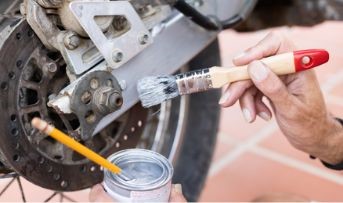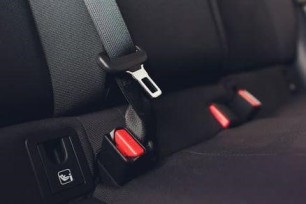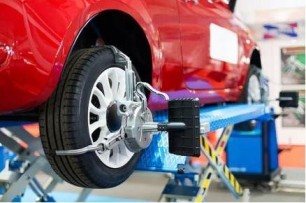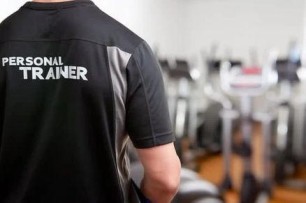General Insurance Blogs, Articles & Updates by - Magma HDI
Have us call you
- RENEW YOUR POLICY
- BUY NEW POLICY

Visit these exclusive palace hotels to enjoy the rich culture and heritage of India
India has long been recognised for its illustrious past and imperial way of life. Its royal palaces were formerly the official residences of royal families but have since been turned into luxury historical hotels with old-world elegance and modern comforts.
Plenty of great palace hotels, particularly in the state of Rajasthan, are now open to visitors. You can visit these exquisite heritage hotels for your extended weekend plans and summer vacations. All of the listed hotels provide splendid service and a more personal experience.
Here are the four Indian palaces turned into hotels where you may indulge the maharaja inside you.
1. Taj Lake Palace, Udaipur:
The Taj Lake Palace in Udaipur is a historic hotel with magnificent rooms and many grand suites. Its location on an island in the middle of the lake Pichola provides exceptional sights of the nearby Aravalli hills, City Palace and Jag Mandir from each room.
The breathtaking setting is ideal for the delicious cuisine served at Taj Lake Palace's fine restaurants, solely available to resident guests. Udaipur, dubbed as the Venice of the East, has a great deal to offer with its spectacular palaces, serene lakes, fascinating temples, and beautiful gardens.
2. The Lalit Grand Palace, Srinagar:
The hotel was designed and constructed by Maharaja Pratap Singh during the 1900s. It has witnessed significant events in India's history and proudly continues the royal lineage with elegance.
It maintains well-equipped luxury suites, including cottages with spectacular design, an ample dining space, and a retail arcade. This beautiful palace is surrounded by the Himalayan peaks and overlooks the gorgeous Dal Lake.
3. Umaid Bhawan Palace, Jodhpur:
This piece of art built between the 1920s and 1940s is part of Rajasthan's legacy and a symbol of contemporary Jodhpur. The palace, formerly home to the royal family of Jodhpur, is now the world's 6th biggest private property.
One common feature that this property shares with Agra's Taj Mahal is the palm court marble used in its design. The palace is situated on Jodhpur's highest point, the Chittar Hills. Get impressed with unique views of the old Blue City, vast dunes, and the magnificent Mehrangarh Fort as you stay here.
4. Rambagh Palace, Jaipur:
Rambagh Palace, established in 1835, was home to Sawai Man Singh II. This jewel of a hotel has magnificently refurbished big luxury rooms and suites that were the erstwhile Maharaja's bedrooms once upon a time.
The palace has been lavishly embellished with hand-carved marble and beautiful Mughal Gardens. Immerse yourself into the finest of Rajasthan's royal history within this splendid palace.
Heritage hotels in India provide a royal treatment to the inner maharaja inside you. They are as stunning, if not more so, than any of Europe's colossal castles or impressive palaces. These remarkable palaces ensure a great and unique holiday to be remembered for years to come. As you plan your visit to these genuinely magical places, make sure you add general insurance to your checklist. Get the best plans for yourself from the most trusted general insurance company and make your travel plans safe and stress-free this summer.
Click HERE to buy insurance from the best general insurance company.
Disclaimer: The information provided above is for illustrative purposes only. To get more details, please refer to policy wordings and prospectus before purchasing a policy.

Here are the top things to consider before you buy a used motorcycle
The volatility of employment and predicting an incoming global economic recession are challenging. These make the consumers to save for tomorrow rather than spend on luxuries and comforts today. While motorcycles are cheaper than cars, they are by no means easy to afford with rising inflation, fuel costs, and other allied servicing costs.
This often leaves a majority of potential buyers to consider a second-hand motorcycle. While many have concerns about buying used motorcycles, by doing due diligence, inspecting the vehicle's mechanical condition, and purchasing two-wheeler insurance India, you can get your hands on a beneficial asset that can provide you with value for years to come!
Here is a checklist of bike parts and inspections to run through before purchasing a used motorcycle.
1. Engine:
The engine is the heart of any vehicle. To check the engine's condition, request the seller not to run the bike. A cold start is the best way to gauge the engine's usage and wear and tear. Look out for smoke from the exhaust pipe or any sputtering noises. Oil leaks are another sign to keep a watch for.
2. Drive chain and sprocket:
While these components may seem highly technical, they are readily identifiable parts in all two-wheelers. Simply put, it refers to the bike chain and the chain wheel, which facilitate gear engagement, acceleration, and power transmission.
Ideally, the chain should only have a slack of three-fourths of an inch to function appropriately and should not shift off the wheel when prodded. If the wheel displays signs of corrosion or wear and tear, it indicates a poorly-maintained bike. Ensure you list your dissatisfactions and factor them in when negotiating a fair price with the seller.
3. Tyres:
Well-maintained tyres are essential for a safe riding experience. Put the motorcycle on its centre stand and check its tread depths. Ensure that they are not too deep, which results in poor gripping and an excess risk of accidents. Cracks along the inner side or rubber toughening are signs of weathered tyres.
Also, check the wheel alignment by spinning the rear wheel. Any wobbling or creaking are indicators of weathered wheel bearings which require replacement. Ensure you check the tyres thoroughly to estimate the cost of repairs and acquisition of the used motorcycle.
4. Visible frame:
The motorcycle's frame can be challenging to inspect depending on the effort spent to spot the issues. Scratches and dents may be the signs of accidents that inevitably affect the overall functionality of the bike's components.
In case you purchase such bikes, even after buying two wheeler insurance India, you may not be able to claim the insurance amount due to the vehicle's poor condition before the accident.
5. Under-seat storage:
An often overlooked part, the under-seat storage locking mechanism, must be checked when purchasing the vehicle. Feel around the space underneath the seat to ensure that it is steady to fit your belongings.
6. Odometer:
Contrary to popular belief, it is easy to replace an odometer. Sellers of old vehicles can tamper with the odometer and try to sell off an old bike as a relatively new one. After inspecting the motorcycle as per the above checklist, check the odometer reading. Ensure that it is aligned with the condition of the vehicle.
While this is not a comprehensive list, it covers the essential things to check before purchasing a used motorcycle to protect yourself from misrepresentation and unfavourable deals. Additionally, since used bikes have a relatively unsafe perception, we recommend buying 2 wheeler insurance online to protect yourself from the risk of financial losses due to accidents.
Click HERE to buy a robust 2 wheeler insurance online for your motorcycle.
Disclaimer: The information provided above is for illustrative purposes only. To get more details, please refer to policy wordings and prospectus before purchasing a policy.

What happens to your car's engine if you drive it without coolant for long
Much like oil, the coolant in your car is a special fluid that can't be overlooked. Although, in comparison to oil, the coolant needs less attention. Car owners often tend to neglect it, which can severely damage the vehicle and potentially be life-threatening.
This post will give you a clear idea about what will happen if you drive with low or no coolant.
What is coolant?
Coolant is a combination of water and antifreeze. It has a greater boiling point than water, and works at higher temperatures and pressures to regulate the heat generated in the engine. It takes heat from the engine and radiates it back into the atmosphere via your radiator.
Here are the effects of driving with insufficient coolant.
1. Overheating:
The main function of a coolant is to extract heat from the engine. A shortage of coolant may cause your car engine to overheat. If you continue to run an overheated engine, there could be irreversible damage, such as pistons welding to the cylinders.
2. Engine cutoff:
Modern vehicles feature a safety mechanism that will turn off the engine if it suffers considerable damage due to a lack of coolant. Although this function can help you save on engine repairs, it can leave you stranded on the road.
3. Damage to the water pump:
The water pump’s function is to circulate coolant throughout the engine. The pump will continue to run dry if there is insufficient coolant. If the pump goes dry, racks and pockets of air will form in the coolant channel. This increases the pump’s burden and can destroy it permanently.
4. Damage to engine:
The engine blocks are not the only sections that can be damaged by overheating. Many other components can become exposed to heat.
Below is the overview of parts that may suffer the wrath of an overheated engine:
• Head gaskets
• Cams and pulleys
• Warped or bent connector rods
• Crankshaft
• Piston timing
• Connecting rod
5. Decreased mileage:
Your car's engine will be less efficient if you don't have enough coolant. Friction generates more heat, which means more energy is spent. As a result, the fuel efficiency is dismal.
How to identify low coolant levels?
1. Dashboard Warning:
The coolant warning light will light up on your dashboard when car sensors detect a low level of coolant. Keep an eye on your dashboard; it is essential to note that not all cars, especially the older ones, have this feature. Therefore, consider manual checking of the level periodically.
2. A.C. blows hot air:
If your AC unit starts blowing hot air, it is a sign of a lack of coolant.
3. Lower mileage:
Your car starts to consume more fuel per km and shows reduced engine performance.
4. Temperature gauge rise:
The temperature levels of internal components start showing an unexpected spike due to the low level of coolant.
It is vital to make regular coolant checks a habit. If your car's coolant runs out, pull over immediately. Let the engine cool to a safe operating temperature before going to the nearest garage.
If you're unable to drive to a garage, have your car towed to avoid the risk of further damages. Car insurance proves to be a valuable investment in such situations. So, purchase a car insurance policy that provides you with your desired benefits and adds value to your four-wheeler.
Click HERE to invest in ideal car insurance that meets all your requirements.
Disclaimer: The information provided above is for illustrative purposes only. To get more details, please refer to policy wordings and prospectus before purchasing a policy.

Here are a few security regulations that the next-generation cars need to adapt
Technological advancements are visible in a country like India, where economic developments are happening rapidly. These changes are accelerating the growth in all sectors, including the automobile sector. The car industry is an essential growth driver of the Indian economy, and a lot is yet to be done in this field.
Additionally, the Indian economy is set to grow by 7.4% in the coming years. This will significantly impact the automotive industry as well. Car sales in the country have grown by 50% in the last few years, and it is set to record more in the coming years. Automobile ownership will take a giant leap and be a convenient option for most commuters.
However, with such growth, the risks also increase. This also leads many fraudsters to take different ways and means to hack and steal. As the existing state of motor security in India is inadequate, every motor insurance company in India is trying to protect people against such crimes.
All next-generation cars must follow more security regulations to address these challenges. Let's have a detailed look at them.
What is the current scenario of vehicle security in India?
Like everything else, the car security statistics of India are not satisfactory. Every year, more advanced means of theft are discovered. Car theft, hijacking, and robbery are common matters these days. The cars are also more prone to theft because there aren't enough safe parking spaces, which makes them easy targets for carjackers.
What is car hacking?
The automotive industry is under the radar of cyber criminals every day. As the technology is being developed, the risk increases. Vehicles are more connected and automated than ever. This allows cybercriminals to hack into the system and steal valuable data.
They make use of malware to get into the vehicle's system and gain access to all the connected devices as well. These mischievous minds can use this to steal financial data, personal information, and the car.
They make use of malware to get into the vehicle's system and gain access to all the connected devices as well. These mischievous minds can use this to steal financial data, personal information, and the car.
What can be done to prevent it?
After the car theft crime rate is increasing rapidly, the Indian government initiated various guidelines for the automobile industry. These security regulations need to be thoroughly followed by all future vehicles. These rules will keep drivers safe and expect to reduce the crime rate. These are
1. Security standards:
The government is trying hard to elevate the safety standards of vehicles. This means that all vehicles need to be equipped with GPS trackers in the future. Additionally, an anti-theft device should be placed too.
2. Using a High-Security Regulation plate:
HSRPs come with a non-removable snap-on lock which is irreplaceable. All the vehicle details, like chassis and engine numbers, can be collected and stored in a secure database using HSRP. These unique number plates will bring uniformity by eliminating the use of fancy plates. This can also aid authorities in easily tracking your vehicle's registration number.
3. Update all software:
It is crucial to regularly update all security patches of your vehicle's firmware and other IoT software to eliminate any possibility of hacking or breaches. Another advanced solution for connected vehicles includes public-key infrastructure (PKI) that ensures a superior level of security.
4. Awareness:
Regular awareness drives and car security campaigns are mapped out for all car owners so that they can be prevented from theft. This also includes educating them about tracking devices, hacking, etc.
5. Accessible public transportation:
The government is creating a massive public transportation infrastructure for the general public's convenience. Buses and metros are being developed every day, and more cities are being included in the list of metros. This will reduce the dependence on private vehicles.
The future of next-generation cars relies on technology. GPS trackers, Bluetooth connectivity, and anti-theft devices are the future of the automotive industry. They will be mandatory in the future. Every motor insurance company is considering them while planning out their insurance policies.
Click HERE to buy a policy from the best motor insurance company.
Disclaimer: The information provided above is for illustrative purposes only. To get more details, please refer to policy wordings and prospectus before purchasing a policy.

Five best two-wheeler renting tips to enhance your riding experience
Various fitness trends have come and gone since the 2000s, but people are still looking for new ways to get fit. With the global pandemic hitting us, people now prefer to work out in their homes because of the government’s orders to close gyms. As a result, online gym classes are also on the rise. Let us look at the upcoming fitness trends in 2022.
Riding a two-wheeler is the perfect way to beat traffic on busy roads. Every bike enthusiast who desires to ride their choice of a two-wheeler can rent a bike to explore unexplored destinations. You can rent them as long as you want without worrying about maintenance or other concerning factors.
Additionally, travelling on a two-wheeler is best to explore a new city or destination. It’s fascinating to see new sights and meet locals to spend quality time. This blog has highlighted some of the most practical tips to ensure a safe and memorable riding experience when you rent a bike. So, let’s dive into the details!
1. Take your time and inspect your vehicle:
Don’t get carried away and end up choosing a bike based on its appearance rather than its performance. Ensure that the brakes, engine, lights, side mirrors, and other essential features are working properly. Take a test ride of the bike you’ve chosen so that you can identify the minor to major problems. If you happen to find any damage or visible dents, take a picture of them so that you’re not accused of harming the bike.
2. Choose a bike based on your ability:
Do not go for a bike that is not suited for you. It will help if you do not opt for expensive bikes unless you have the money to pay (in case of damages) or put a dent in them. Similarly, stay away from bikes providing you with cheap rental rates. There are chances that the “cheap” rented bikes are either damaged or have issues that may land you in a problematic situation. Instead, choose according to the vehicle’s weight, acceleration, and the purpose of your renting. Ensure that the selected vehicle is well suited for the roads you intend to ride, providing you with a safe, less risky, and smoother experience.
3. Go through the reviews of the rental company:
Most bike rental companies tend to attract customers with low rental rates. Do not fall for the trap and choose bikes that have travelled many kilometers. Always check that the bike rental service has a good reputation and customer reviews.
4. Keep your license and bike papers handy:
Always check the validity of your licence before renting a vehicle. Carry your licence and the bike papers wherever you go. Ensure that your bike rental service company provides you with insurance, bike registration number, and pollution under control certificate.
5. Carry essentials:
Keep essential spares like a spare tube, spark plugs, brake, and accelerator cables. Prioritise your safety by always wearing protective gear while riding. Ensure the safety gears and helmet are in good condition and of the best quality. There’s a brilliant range of motorcycle luggage saddlebags available in the market. You can keep the saddlebags on the back or side of your bike or tanks that can carry light stuff. Furthermore, put your health and safety first and carry first aid kits with all the needed tools and medicines.
Two-wheeler renting can be made hassle-free by following these handy tips. Self-riding bike rentals offer you the freedom to choose and travel at your convenience and pace at reasonable rates. Make your daily commute comfortable by using a rented bike. But, you shouldn't neglect safety at any point. Ride with proper safety gear and ensure that you collect all the required documents like the PUC and even the insurance papers to verify that the vehicle is insured by the best two wheeler insurance in India. Thoroughly conduct these practices before renting the two-wheeler to have a flawless experience.
Click HERE to browse through the best two wheeler insurance in India.
Disclaimer: The information provided above is for illustrative purposes only. To get more details, please refer to policy wordings and prospectus before purchasing a policy.

Is your car making unusual noises? Know what they could mean
People are emotionally attached to their car so much that even a small scratch or dent woes their heart. What bothers them more is when the car makes strange noises. This situation sometimes leads to trouble. So instead of panicking, you need to understand the underlying cause and take your vehicle to a mechanic if required.
We've created a list of seven common car noises to listen out so that you identify and then fix them at the early stage itself.
1. Squealing sound:
One of the most frequent noises is a screeching sound from under the hood. It hints that the rubber belts that drive accessories such as AC compressor or power steering pump have either slipped off or worn out. If the screeching originates from the wheels when you use the brakes, it might indicate that your brake pads are weary or have faults with the braking system. On the other hand, if the squealing comes from your tyres, it may be due to a loose wheel cap or rims.
2. Hissing sound:
This sound underneath the hood indicates a fluid leak onto a hot engine component—for instance, radiator coolant seeping onto the engine block or exhaust manifold. If the hissing occurs while you accelerate, it might result from a vacuum leak from one of the small hoses around the engine's air intake.
3. Rattling sound:
Rattles suggest that something is loose or has stuck itself in an inappropriate place. For example, a component of the exhaust or suspension might have been broken loose. Mind it; this one needs attention as soon as possible. Remember, if you need an expert mechanic to ensure preventative maintenance, suitable car insurance helps you with your costly repair bills.
4. Whistling sound:
Whistling sounds are disturbing and might indicate a vacuum leak in one of the hoses around the air filter, which can be challenging to locate but is typically straightforward to fix.
5. Clunking sound:
If you hear a clunking sound when you apply the brakes, it might reflect that the braking discs or pads have severe wear or damage. If the clunk occurs when driving over bumps, your car's suspension may be faulty, or an exhaust section may be loose. If your automobile clunks when turning corners, it might be due to a problem with the steering or a worn-out wheel bearing.
6. Roaring sound:
When you accelerate, a roaring or noisy exhaust indicates that the existing exhaust system has eroded to the point that the silencer is no longer keeping the car quiet. Although an exhaust problem is unlikely to cause your automobile to stop or cause more damage, it may be allowing carbon monoxide fumes into the cabin, which is hazardous. Get it fixed ASAP!
Next time when you're out for a drive, apart from listening to the music, make it a point that you hear your vehicle first. You won't want to experience an awful drive with crazy noises that result in the breakdown of your car midway.
Few noises may indicate possibilities of damages. It is, therefore, important to get your car inspected at a service station to address the issue. Additionally, with time, the repair cost will also keep on increasing. So, reduce dependencies on the additional expenses, and consider purchasing car insurance to add value to the life of your car. With the best car insurance protection, give your four-wheeled companion the strength to drive more miles together.
Click HERE to know about the best car insurance plans in the market in 2021.
Disclaimer: The information provided above is for illustrative purposes only. To get more details, please refer to policy wordings and prospectus before purchasing a policy.

Keep these essentials in your two-wheeler riding kit at all times
In a busy and constantly moving country like India, most of the population uses two-wheelers as the daily mode of transportation. Regardless of whether you ride your two-wheeler every day or just a short trip to a grocery store, it is a good idea to carry some essential items in your two-wheeler riding kit. This includes everything from motorcycle replacement parts, first aid kit to important documents and 2 wheeler insurance.
In this article, we'll tell you exactly how to put together a riding kit that will be an excellent aid in chaotic situations.
1. Keep the basic spare parts:
You should always have some vehicle spare parts and equipment handy so that you can be the mechanic of your two-wheeler during an emergency. A few extras to have in your tool kit are a screwdriver, a headlight bulb, and battery fuses.
2. First-aid kit:
First-aid kits have always been prioritized when driving vehicles, but how many of us religiously carry them? If NO, then pack one today and take it the next time you leave your home on your two-wheeler. Some fundamental essentials must be an antiseptic solution, bandages, pain relief sprays, and painkillers. However, this kit is to be used only on minor injuries like cuts and scratches. In case of significant damages from accidents, approach for assistance and go to the hospital right away.
3. Accessories for personal protection:
Riding on a bike is not a fun game each time. It can get tougher with distance and situations. It is dangerous to ride a two-wheeler without wearing a proper helmet. A full-face helmet should always be part of your riding kit. Also, ensure to kit up appropriately with something that is breathable and will keep you at ease. Hence, have a decent quality sunscreen or scarf to protect your skin from exposure to the sun, dirt, and pollution.
Besides, staying hydrated throughout the day is important and neglecting it while riding isn't an option. So, having a water bottle on your bike is always a good idea.
4. Necessary documents and paperwork:
Traffic police regularly drive campaigns of checking the legal papers. If found riding without legitimate documents, you can face the consequences by the authorities. Therefore, when travelling on your bike, it is mandatory to have a Rider's Driving Licence, Registration Certificate, PUC Certificate, Fitness Certificate and a valid 2 wheeler insurance policy.
It is believed that 'life is always better on two wheels'. However, in a country full of turns, traffic congestion, narrow lanes and potholes, the possibility of vehicle breakdown is a prime concern among two-wheeler riders. So, if you think that you're a pro rider, you're also not completely safe on the roads. The above essential items are for your convenience on the road and quick-fix minor issues when they arise. Keeping these points in mind, put together your necessary bike riding equipment, ensure your bike papers, including valid 2 wheeler insurance before you kick-start the bike next time.
Want to know more about our best two-wheeler insurance policy? Click HERE .
Disclaimer: The information provided above is for illustrative purposes only. To get more details, please refer to policy wordings and prospectus before purchasing a policy.

Here's why you should prioritise early diagnosis and treatment of minor illnesses
Diagnosis is the point around which judgement and logical reasoning move, bringing the light of scientific clarity. Therefore, the detection of a sickness or health condition should be an essential component in the practice of medicine or surgery. It serves as the cornerstone or foundation for the doctor to develop a treatment strategy and determine the prognosis.
Early diagnosis is better as it gives us ample time to decide the treatment. Also, it saves us from worrying about the severity of the illness.
The significance of early diagnosis:
According to a significant analysis of the benefits of early detection, a diagnosis frequently meets with skepticism, anger, loss, and sadness. Critically, how patients are notified about their results and the degree of care available to them and their families determines their response.
Advantages of early diagnosis:
An early diagnosis and access to the appropriate resources and support may assist people in taking control of their illness, planning for the future, and living a healthy life. In addition, it will help in ruling out the chance of other potentially curable diseases and other alarming health concerns.
It can help a person acquire access to critical information and resources, make the most of their skills, and perhaps benefit from available drug and non-drug therapies. A quick diagnosis allows a person to be vocal and explain the changes in their life to family and friends. On a practical level, a person may assess their financial status and consult with family or legal specialists about establishing a lasting power of attorney or an advance decision.
There is significant evidence that a sooner diagnosis improves the quality of life. It avoids premature or needless admission to a care home or hospital, improving the way of life for patients and their caretakers while saving money on long-term care expenditures. The earlier a person gets diagnosed, the more successful the treatment can be.
Why some individuals may object to an early diagnosis:
According to a study, common illnesses are people's most significant concern in old age, surpassing cancer and any other ailments. Yet, some with early indications of these diseases opt not to seek a diagnosis due to concerns about the impact on their everyday life, employment, social lives. The anxiety overpowers the thought of obtaining proper medical treatment in the initial stage itself. Moreover, if early detection is ignored, it may worsen the situation for the patient to sustain treatment and recovery.
However, the benefits of an early diagnosis far outweigh these concerns, and a person suffering from a curable disease can receive the appropriate care and support to be fit again.
Indeed, the sooner the diagnosis, the better. The reason to attribute this comprises the excellent therapies that effectively cure the early stages of the sickness. Diagnosis allows us to treat a problem before it progresses to an ultimately lethal stage. Never fear your health. Take charge of it and keep yourself mentally strong to tackle the situation with vigour.
Additionally, make it a habit to invest in health insurance for you and your family to ensure your well-being and lead a less stressful life. Insurance firms provide exclusive incentives and benefits to those investing in online health insurance plans.
To get your online health insurance, click HERE .
Disclaimer: The information provided above is for illustrative purposes only. To get more details, please refer to policy wordings and prospectus before purchasing a policy.

Proven ways to stop worrying and overthinking
Overthinking is a thief of your energy. It takes away your peace and composure of mind. It is an art of creating problems that don’t even exist. Unfortunately, some individuals can’t seem to stop their minds from wandering with many thoughts. It’s like running a marathon each day mentally.
You invest your time, attention, and energy in thinking about situations and issues that are irrelevant, hypothetical, or baseless. Breaking this toxic habit will help you with extra mental energy to get the express ticket to happiness. Follow our brief guide about reducing and eventually stop worrying and overthinking.
1. Don't be mind-full; instead, be mindful:
Whenever you catch yourself overthinking, take a moment to reflect on your thoughts. Breathe and acknowledge the present moment. Then, challenge your thoughts and try to be aware of what's happening around you as much as possible.
2. Focus on solving problems and not amplifying them:
Overthinking about a problem will only lead to more problems. When you're actively investing your mind into problem-solving, you're using your best asset (the brain) positively.
3. Change your perspectives on things:
Stanley Gordon West once said, "Smile, and the world smiles with you". Changing your point of view can provide you with a completely different way of thinking and feeling about yourself. Moreover, changing your point of view might lead to a whole new universe of possibilities and ideas.
4. Diet plays a vital role than you think:
As Ayurveda rightly says that Medicine is not needed if the diet is correct; healthy food improves brain function, regulates blood circulation, reduces blood pressure, and eliminates toxins from the body. These aspects can directly impact your pattern of thinking and help positive outputs throughout the day.
5. Stop being a perfectionist. Even the almighty isn't:
It is a double-edged sword. Sometimes being a perfectionist is like being your enemy. Rather than assisting you in achieving success, it works against you. So next time you're worrying and overthinking about making a presentation perfect, consult your colleague. It can turn out that your existing one is already good.
6. Take out time to reflect at regular intervals:
Whether daily, weekly, or once a month, take out some time for reflective thinking. This task will assist you in examining your assumptions and making connections between different bits of information systematically.
7. Techniques to cope:
Try these techniques mentioned below to bring your attention back to the present whenever you feel overwhelmed.
You can follow these tips anytime and anywhere:
• Meditation: The best escape to calmness is meditation. Getting answers to unsolved questions becomes easy when your mind is free from junk thoughts. So invest 10 to 15 mins of your day into a peaceful meditation session and see the magic start happening.
• 5-4-3-2-1 Rule:
- Look for 5 things around you.
- Feel any 4 things you can touch.
- Recognize 3 things you can hear.
- Acknowledge 2 things you can smell.
- Become aware of 1 particular taste in your mouth.
Overthinking is not an illness, but research reveals that it can pose severe consequences to your health if continued for a long time. It can hinder your social, personal and professional life due to mental discomfort. To overcome this, you will need to shift your perspective and make a concerted effort to dismiss any thoughts that lead you towards wrong assumptions. Along with all the above practices, get yourself health insurance covering all your needs for perfect well-being. It's also one less task to think about!
Click HERE to know more about health insurance to keep you financially fit.
Disclaimer: The information provided above is for illustrative purposes only. To get more details, please refer to policy wordings and prospectus before purchasing a policy.

Keep these seven tips in mind to retain your car's value
Do you want to have your car looking new and flawless for an extended period? Regular servicing and proper maintenance can help your vehicle survive as long as feasible. Maintaining your vehicle will also yield profit in sales and savings if you want to trade or resell it at some point.
Depreciation is an essential component in evaluating your car's commercial value when you start planning to sell it. But there are some things you can conduct to safeguard your vehicle's market value and reduce depreciation to a minimum.
Continue reading this article to uncover the best tips to retain your car's value.
1. Organize the papers:
Prospective buyers will want to know the vehicle's ownership history and if it has been maintained properly. Therefore, keep all your car documents in order inside a file to prevent unpleasant queries regarding its most recent service or filter change. Your car will be worth more since you can show proof of service, MOTs, and oil changes.
2. Keep the interior dazzling:
Interior maintenance is just as vital as exterior upkeep, so try to include it in your routine cleaning. The car's interiors undergo a lot of wear and tear, scratches, cuts, spills, and foul odours over time. As a result, it may significantly influence the value of your vehicle.
3. Do not forget to clean, polish and wax semi-regularly:
Maintaining the paintwork on your vehicle will boost its value. Only a few owners can confidently state that they keep up with car washing and waxing. When paintwork is not adequately maintained and managed, it will degrade and deteriorate with time. Faded exterior colour contributes the most to your car looking worn out, eventually decreasing its market price.
4. Repair minor issues immediately:
Neglecting minor technical faults may not seem like a massive deal to you, but it leaves a poor impression on potential buyers. Remember that the cost of repairing minor defects is frequently less than the influence that mechanical flaws will have on the car's value.
5. Fix slight dents and scuffs right away:
You may believe that bumps and scrapes on the outside aren't worth fixing, especially if your vehicle is outdated. But, impairments like these can cause a significant decline in the overall value. They may also invite rust and corrosion, which garages and astute purchasers can detect, resulting in lesser prices.
6. Maintain the sheen of your wheels:
Wheels are subjected to daily damage and can get coated in a layer of dangerous road deposits and brake dust. So when the wheels appear well-cared for, it not only makes the car seem remarkable, but it also says a lot about how it's been driven.
7. Ensure the car's insurance:
Get your car insured from day one for financial security. There are numerous private car insurance India policies that you can choose from. Having an insurance cover for your vehicle flourishes its market value by thousands.
A car is one of the most financially significant purchases individuals make throughout their lives. Unfortunately, value of the car begins to depreciate immediately after driving them off the showroom. However, this does not suggest that your car will completely lose its value. Even an old, well-used automobile has some monetary worth and may be sold or traded in for cash. The ultimate goal is to get as much of the vehicle's worth as possible while owning it, and by following these tips, you can attain this easily.
To browse private car insurance India policies, click HERE.
Disclaimer: The information provided above is for illustrative purposes only. To get more details, please refer to policy wordings and prospectus before purchasing a policy.

Know about the loan process if you are buying a two-wheeler as a college student
If you are a college student, the chances are that you have tried to convince your parents to buy you a two-wheeler. A vehicle becomes a necessity given the number of places you have to travel to, coaching classes, purchasing project materials, helping your mother get daily groceries, etc. A two-wheeler would be a wise investment to help save commuting expenses.
As a college student, you start understanding the importance of financial independence. You may lack enough funds to purchase it by making a one-time payment in full. However, Many NBFCs have made it relatively affordable for the students to choose a loan scheme with a structure that suits their needs. Some lending institutions also offer competitive interest rates on these two-wheeler loans.
Are you looking to purchase a vehicle for your day-to-day college activities? Here’s all you should know about the loan process if you’re buying a two-wheeler as a college student.
Key features of bike Loans:
1. Document verification takes approximately three days.
2. On average, the loan period will extend up to 3 years for applicants (students).
3. The loan doesn’t mention any restrictions on the type of two-wheeler the student wants to purchase. It can be either a superbike, moped or anything in between.
4. Most two-wheeler loans for students are considered a type of unsecured credit. So, there is no requirement for collateral or security.
5. If you’re applying for this loan, you must mention a co-applicant or guarantor with employment stability and healthy credits to avail of this loan with convenience.
Eligibility (For students):
1. You should be a student to apply for this loan.
2. The loan applicant’s minimum age requirement is 18 years.
3. Student’s permanent residence is required at the time of application.
Eligibility (For Guarantors):
1. The co-borrowers should have credits > 700 or above (ideally). This favors the applicant to secure a low-interest rate for the two-wheeler loan.
2. Appropriate documents should be presented from the guarantor’s end to showcase financial and income stability.
Required documents (applicant):
1. KYC documents (AADHAR, Passport, Voter ID, Driver’s license, etc.)
2. Address proof (Passport, Bank Passbook, Utility Bills, etc.)
The following documents are to be presented if the guarantor is self-employed:
1. ITR-Income Tax Returns of the past two years
2. Bank statements of the past year
3. Business proof
The following documents are to be presented if the guarantor is salaried:
1. Pay slips of the last six months
2. Bank statements of the last six months
Application process:
To apply for a two-wheeler loan, here are three simple steps you need to follow. But before going ahead with the loan process, make sure that you’ve finalised your vehicle, its model, and a dealer.
1. The lender you’ve chosen will check your eligibility for the loan at the dealership.
2. Once your eligibility for the loan is verified, you need to fill up an application form and submit it along with the necessary documents required by the lender.
3. Once all the documents are verified, and your loan is approved, the required amount will be sanctioned and transferred into your dealer’s account. You can get your vehicle now!
This was the complete guide to the loan process to buy a two-wheeler as a college student. Another wise idea is to get insurance to ensure the safety of your vehicle in case of extreme unexpected circumstances. You can purchase 2 wheeler insurance online with the convenience and hassle-free process associated even while settling a claim.
Click HERE to know more about how you can get 2 wheeler insurance online.
Disclaimer: The information provided above is for illustrative purposes only. To get more details, please refer to policy wordings and prospectus before purchasing a policy.

Are you feeling depressed? Ten proven ways to combat depression
According to the World Health Organization, around 57 million Indians suffer from some sort of depression. Depression takes a considerable toll on your health. It can make you feel physically weak and mentally drained, challenging your desire to seek treatment and get rid of it.
We've curated a list of ten beneficial tips to manage depression without the need for medicines and improve the quality of your life.
1. Follow a routine:
When circumstances become unpredictable, a routine can help you feel organized, minimize stress, and cope with change. When you stick to a schedule, you prioritize self-care activities which you often overlook when life gets complicated.
2. Value yourself:
Take out time for your interests or extend your skillset. Cook your favourite dish, go dancing with your earphones on, learn a new language. Do what pleases your mind and soul, and treat yourself with compassion and respect.
3. Consume healthy food:
Diet can affect your mental state in ways that you can't imagine. Make sure you consume a well-balanced diet that's low in saturated fat and rich in nutrients. A nutritionist or dietitian can assist you in analyzing your eating habits and identifying any dietary deficiencies that may be contributing to your mental health.
4. Exercise:
Exercise stimulates those chemicals in your brain which are in short supply due to the depressive phase. Studies show workouts help you boost your endorphins and truly make you happier.
5. Meditate:
Mindfulness can help you change how you react to negative sensations. Meditation teaches the brain to maintain continuous attention and focus when unpleasant thoughts, emotions, or physical sensations enter.
6. Change drinking habits:
Alcohol is a depressant, so that's already a big NO while combating depression. Coffee has proven to have adverse effects when combined with sugar. Try to lower down your consumption of coffee as a whole, and if you decide to have it, have it unsweetened. Strongly linked with depression are sweetened drinks, so it's a better option to distance yourself from them.
7. Socialize with people with a positive mindset:
Interact with people who lift your spirits. While it's OK to spend some time alone, strike a balance and avoid isolating yourself; otherwise, the sadness will persist.
8. Music therapy:
Music improves the mood and general well-being of a person. Music therapy involves playing music using various instruments, singing, dancing to music, or simply listening to it.
9. Get inspired by motivational content:
It can change negative thoughts and make a depressed person feel better. Depression-fighting literature, quotes, movies, and posters differ from person to person. Go online and read reviews to get a sense of what could work best for you. You can listen to podcasts or watch videos of motivational speakers.
10. Volunteer:
Volunteer for acts of kindness, donate for a good cause or commit a random act of kindness. Presenting or performing acts of charity can have comparable mood-lifting and well-being benefits.
Sadness is a complex emotion to deal with; these ways are only supposed to act as your support in the tough times. If you have chronic depression symptoms, always seek professional help. Understand that depression is just a bad phase in life that will eventually go away if you stay positive and strong.
By taking too much stress, you will affect today's strengths by worrying about future. One way you can avoid the additional worries of tomorrow and make your future secure is health insurance. Health problems due to depression involve medical expenses that may drain your pockets. So, consider buying health insurance to cover the losses. To simplify this, online Health Insurance provides you with a suitable plan to protect you from any impact on your financial plan.
Click HERE to know about the best health insurance plan for you.
Disclaimer: The information provided above is for illustrative purposes only. To get more details, please refer to policy wordings and prospectus before purchasing a policy.

Learn more about the grace period of health insurance policies
When the COVID-19 pandemic hit, we realised the importance of public health and safety. Everyone understood how integral it is to maintain a robust immune system to keep themselves and the people around safe.
While we can do everything in our power to maintain our health, falling sick is a common occurrence in every individual’s life. Unfortunately, there is no assurance that we can prevent contracting diseases. But we can invest in health insurance schemes and plans to fall back on when in dire need. You can purchase suitable online health insurance to secure your health and safety in the long run. However, it can be challenging to keep track of the due dates to renew the insurance plans as per the policy. Luckily, insurance companies provide a certain grace period to the policyholders to complete the required renewal procedure.
What is a grace period in health insurance plans?
Grace period is a time provided by the health insurance provider to the policyholders after the due date to pay the premium has lapsed. It is a second chance to renew the health insurance policy before it becomes inactive.
The grace period offered differs from company to company and the type of policy that has been issued. It is always mentioned in the insurance policy’s terms and conditions, which usually range between 15 days to 30 days.
The premium for the health insurance policy must be paid by the end of the grace period to avoid penalties or deactivation. Depending on the policy, health insurance claims during this period may not be settled by the provider until the premium for the insurance plan is paid. Therefore, it is integral to make sure your online health insurance is consistently active to ensure a smooth process in case of unplanned hospitalisation.
Is the waiting period and grace period in health insurance the same?
The grace period provided for a health insurance plan is not the same as the waiting period. The waiting period signifies the phase where the new policyholders are expected to wait to receive the health insurance benefits. A waiting period may usually range from 24 to 48 months, during which you cannot settle any claims.
While the waiting period puts you on hold to file any health insurance claims, the grace period gives an existing policyholder an extra set of days to complete the renewal process. However, once the grace period for the insurance policy has run out, the policyholder will have to elect a new plan. Therefore, it is better to remember the renewal due date and grace period of the insurance plan and pay the premium on time to avoid losing the policy.
To sum it up, it is advisable to invest in an online health insurance plan and renew it conveniently online. Expired health insurance does not ensure any cover for your emergent hospitalisation or relevant claims, which is a risk best avoided. Take accountability for your health and guarantee that you make timely payment for the policy premium. Always stay responsible for staying healthy.
Click HERE to get the best deals on health insurance.
Disclaimer: The information provided above is for illustrative purposes only. To get more details, please refer to policy wordings and prospectus before purchasing a policy.

Let's understand the impact of depreciation on the cost of your two-wheeler insurance
There are numerous factors to consider when buying two-wheeler insurance. While they may seem intimidating, they are not complex. You can quickly learn about them with access to relevant information. Today, we will discuss how depreciation affects your insurance premium.
After reading this blog, we ensure that you will get a good grasp of how depreciation affects the cost of your two-wheeler insurance. So let us guide you through it.
Firstly, what does depreciation mean?
Depreciation is calculated primarily on your two-wheeler's Insured Declared Value (IDV). It's the estimated market value determined by your insurer depending on the brand and model. So, depreciation is a drop in the IDV over time. It is caused by the wear and tear of the vehicle.
How will it affect your Insurance Premium?
The Insured Declared Value (IDV) is the entire amount that the insurer would pay you if your two-wheeler gets damaged. So, if your vehicle's IDV is high, your insurance premium will automatically increase. And if your IDV is low, your insurance cost will also be low. This implies that the insurance cost is directly proportional to the IDV.
How will your IDV be calculated if the age of the two-wheeler exceeds 5 years?
If your two-wheeler is more than 5 years old, your insurer will compute the IDV according to their criteria. In this instance, your insurance provider will make the final decision based on the condition of your two-wheeler and its components.
*Note: IDV depreciation will grow at a rate of 2.5% every year thereafter.
Insurance companies also have IDV calculators on their websites so that you buy two-wheeler insurance online. You have to enter your bike’s registration number and past insurance policy status and get a quote.
Want to know how add-ons help in this?
The answer is obtaining a zero depreciation add-on cover while buying insurance. Also known as a nil depreciation add-on, you can buy it at an added cost to enhance the insurance policy. It enables you to get the total cost of replacement of components at the time of claim and avoids the insurer's compensation from being reduced. It is an excellent feature to protect against damages while filing a claim and buying replacement components.
You can ask your insurance agent for this add-on. Moreover, you can get this add-on even when you buy two-wheeler insurance online without any intermediary.
Have you gained an insight into the working of the depreciation factor? The value of your bike starts decreasing the moment you take it out of the showroom. So, you need to undertake the security of your two-wheeler and assure hassle-free claim settlement at the time of mishaps.
We recommend getting a zero depreciation cover for your two-wheeled companion if you haven’t already and get the advantages of 0% depreciation coverage. Although it appears to be a little expensive in the premium, but it will help in more significant savings in the longer run. Be future-ready and buy two-wheeler insurance online to ensure the safety and longevity of your valuable two wheeler.
Click HERE to explore the plans and buy two wheeler insurance online right away.
Disclaimer: The information provided above is for illustrative purposes only. To get more details, please refer to policy wordings and prospectus before purchasing a policy.

Revealing the hidden benefits of cashless mediclaim policy
The pandemic has brought the whole world to a standstill and has taught us the importance of health. Proper nutrition and exercising are vital components for taking care of your body. But, so is opting for the best health insurance that suits your needs.
Today, let's talk about the cashless mediclaim policy and how it provides a convenient way for accessing medical necessities and hospitalisation without worrying about settling the bill. The expenditure during the hospitalisation period is paid to the hospital directly by the insurance company. This eliminates the pressure of reimbursement and allows more focus on the patient's health.
If you are planning to get a cashless mediclaim policy, consider these benefits to get better clarity.
1. Cashless mediclaim policies bail you out of the tiring and extensive process of filling lengthy forms and papers. It gives you the freedom to concentrate on the patient's health without worrying about the monetary aspect of the situation.
2. It saves you from the increasing costs of medical care in India and guarantees a hassle-free experience in the time of a medical emergency.
3. Cashless mediclaim policies minimize the financial burden. They provide monetary coverage, and you don't have to worry about arranging the cash in advance for medical bills.
4. Not only do they cover the hospitalisation expenses, but they also take care of your pre and post-hospitalisation financial worries. Some of them also include benefits like checkups at regular intervals, ambulance charges, domiciliary treatment spendings, etc.
5. Managing a medical emergency in an unknown place would be stressful and difficult. In such times, a cashless mediclaim policy might come to your rescue as they have extensive coverage of several hospitals nationwide. With these policies, you can put your mind at ease and travel without a shred of fear about you and your family's health. By observing the rapid increment in the customer database, the features of cashless policies are being updated regularly to meet the requirements of the customers and the industry.
6. Under Section 80D of the Income Tax Act 1961, the premium paid for the policies is eligible for tax benefits (up to a limit of INR 15,000 for senior citizens and INR 10,000 for non-senior citizens). These cashless mediclaim policies also benefit tax savings, thus minimising stress and financial load.
7. Unjustified costs in the medical bills are directly taken care of by the insurance companies. They contact the hospitals directly to tally the verified and unverified expenses. This promises a smooth experience for the patient and the caretakers.
8. Mediclaim policies also include planned and emergency hospitalisation, thus widely covering the prospects of an unprecedented medical situation through a wide range of hospital networks.
There you have it! All the benefits of the cashless mediclaim policies listed above help you choose the best treatment efficiently. Emergencies never come with a warning. You need to protect yourself and your family in times of sudden medical urgencies. Explore your options and find a suitable health insurance plan which caters to your needs and delivers when required. Receiving comprehensive benefits of a hassle-free diagnosis and treatment with affordable premium rates and total cashless transactions during emergencies is revolutionary progress observed by the healthcare sector. Let's actively participate and draw results from this service provided by health insurance companies.
Click HERE to know more about health insurance.
Disclaimer: The information provided above is for illustrative purposes only. To get more details, please refer to policy wordings and prospectus before purchasing a policy.

The complete guide to the steps of the ‘Miracle Morning Routine’
During the last couple of years, we have seen an increasing trend of people preferring a more holistic approach to their lives by reading books, working out, consuming a healthy diet, and prioritising their well-being. Suppose you are one of those who want to get a better hold of their life and inculcate better habits, this article might just help you stay insured of your life and your health.
We recommend you to the “Miracle Morning Routine”, which is relatively simple and brings a fresh perspective on maintaining a good habit that needs only an hour of your day.
The idea draws inspiration from a book named ‘Miracle Morning’ by Hal Elrod. The book discusses a short acronym called S.A.V.E.R.S. which we will be diving deep into.
1. S – Silence:
In this step, you are expected to maintain silence and value its presence around you. This is one of the many meditation techniques that people follow, where your only focus is the silence around you. This way, you allow your mind to enjoy 10 minutes of peace first thing in the morning to start fresh.
2. A – Affirmations:
These days, many of us are leading a chaotic and confusing life, but having a sense of belief in ourselves is what keeps us going. Spending 10 minutes of your day affirming your capabilities will motivate you to work towards your goals.
3. V – Visualisation:
This is a technique where you use visual aids such as images that helps you visualise the kind of life you want to lead. The visualisation will inspire you to be a visionary. This technique helps channel your brain into believing that the things you hope to achieve in life will eventually find their way to you. All you need to do is believe in yourself and work consistently till the goal is achieved.
4. E – Exercise:
Working out for an hour might seem like a mammoth task to most of us. But working out for 10 minutes is doable. This will help you realise the positive effects of exercising, as the endorphins released lead to a sense of euphoria that you will carry on for the entire day. This will only prompt you to adopt a healthy lifestyle.
5. R – Reading:
Time and again, we have been reminded about the benefits of reading books. With the availability of many options for entertainment, reading has taken a backseat. This routine talks about taking out 10 minutes of your day to read something. Over time, you will have read an entire book without even realising. Daily newspaper reading is also believed to be good knowledge therapy. Reading contributes to improved brain functioning and reasoning skills.
6. S – Scribing:
Any form of free-flowing writing is known as scribing. Scribing could range from to-do lists or how you feel about the day to things you are looking forward to. Having things written down helps you design your plan of action, thus making it easier for you to navigate your day.
By sparing just an hour of your morning, you will have a sense of achievement at having completed six tasks before your day has even begun. This routine is a must-try for building a healthy and holistic lifestyle. Stay consistent and notice positive changes influencing your well-being. Along with these, undergo regular health checkups and keep your health insurance up-to-date. Plan to lead a life that lets you balance your work and personal life.
Click HERE to find out more about health insurance plans.
Disclaimer: The information provided above is for illustrative purposes only. To get more details, please refer to policy wordings and prospectus before purchasing a policy.

Five ways to make your workplace a more positive and secure place for women
The safety of women has always been paramount in every sector. Every year on March 8th, for International Women's Day, many committees are formed regularly to safeguard the security of women. However, the number of cases of women harassment at the workplace is on the rise at an alarming rate. Incorporating the PoSH Act with the company standards and compliance is the first step in making a safer workplace for women. There are numerous right and practical solutions to adopt and safeguard women's safety in the workplace. The goal, though, is to change people's minds.
The following are some concrete methods to create a safer and positive work environment for women.
1. Create awareness:
Employees, both male and female, should be educated about ethical conduct and how to foster a secure workplace for women. Office management should routinely raise awareness about the PoSH Act, women rights and authorities. It will enable them to recognize when subjected to inappropriate behaviour and report their concerns to the relevant authority. In addition, the employer should regularly poll female employees to take input on the working environment for a safer and positive atmosphere.
2. Make way for a robust complaints panel:
Create a reliable and inclusive Internal Complaints Committee that rigorously investigates and takes measures in any situation involving the safety of women employees in the workplace. Employees of all genders and grades should be treated similarly by such a panel. The judicial procedure may seem to be a startling set-up for some victims. As a result, some companies may consider ICC alternatives for smooth execution.
3. Stringent zero-tolerance policy:
A company's global reputation improves when it establishes and enforces high standards for its workforce. The business should establish a policy with harsh disciplinary implications for anyone who infringes it, as the action speaks a lot about its ethics. Any misconduct or harassment of female employees should fall under the zero-tolerance policy, and the concerned authorities must act upon strict actions against the people violating this policy.
4. Encourage women to collaborate and communicate:
In general, women subjected to sexual harassment do not speak up. The employer must encourage female employees to express their dissatisfaction. To boost employee morale, establish equal opportunities for male and female employees. This will help women fight societal stigma because of the spirit of solidarity at work.
5. Precautions for a safer work environment:
Access to all workplace safety precautions should be available to female employees. In addition, concerned authorities should consider all the dangers that may exist on the property. Women may encounter dangers even when working in the field. Many companies do not provide the same level of physical protection to women as they do to men. It might dissuade female workers and lower productivity.
Even if you take all necessary procedures to safeguard your women employees' safety, financial liability in the event of an accident or illness will remain a burden and may even obstruct business operations. Get the group general insurance online quote for a cost-effective and progressive approach to mitigate these risks to observe growth and development.
To look for general insurance online quote, click HERE!
Disclaimer: The information provided above is for illustrative purposes only. To get more details, please refer to policy wordings and prospectus before purchasing a policy.

Ten habits that will make you highly productive
In this new normal post-Covid world, the work environment is getting more convenient as work from anywhere culture brings flexibility in your life. As a result, people are spending more time at home than in offices. Yet, despite this significant change, people are still finding themselves less productive.
What does being productive mean to you? Are you still wondering about the ways to bring the change you want? Here are ten habits you can apply in your life to become super productive.
1. Having a proper sleep schedule:
An irregular sleep will get you nowhere. The short naps you take don't qualify as restorative sleep. On the other hand, having a sleep schedule helps you be more energetic, creative, and productive the next day.
2. Start early and peacefully:
Wake up early to follow a proper morning routine without rushing for work. Include exercise in your morning routine, as it releases endorphins and keeps you healthy. Try to include a little meditation to recharge your mind and give you a positive outlook on the day ahead.
3. Unplug:
Advanced technology helps your efficiency, but it can be a major distraction if used excessively. So, the best way to get things done is to turn off the things dying for attention. For example, have a 'shutdown' time [switch off electronics] before going to bed, as needed for your mental health and well-being. Take some time off your computer to connect with nature and get some freshness.
4. Plan to prioritize:
Prepare a rough to-do list before you go to bed. It will give you a head start on your day, and the mental preparation guides you effortlessly through your day. Decide in advance for the clothes to wear or breakfast the next day.
5. Do not multitask:
Multitasking isn't the right way to get things done. Sharing your energy and brain space to several things at the same time will reduce your efficiency. Instead, dedicate your attention and energy to one task at a time to derive the best results.
6. Learn to say 'NO':
We believe that 'saying no' is terribly bad for our reputation. But, not always. Learn to say no to things that are not worth your time and energy. The earlier you realize this, you will observe better results. You can utilize that time in doing an activity that makes you happy.
7. Take a break:
Your brain needs a break to refresh and gather the lost energy back. Not taking a break lowers your productivity levels and makes you feel burnt out. So, take a break, stretch or go for a short walk in the open space.
8. Declutter:
Having a clean working space makes your work easier. It only takes a few minutes to clean up your desk or throw away your coffee cups.
9. Keep going:
Be persistent, not a procrastinator. This is what qualifies you as a productive person. Get things done now; do not apply later on policy.
10. Feel accomplished:
Rewarding yourself is the best incentive for being productive. Therefore, provide yourself with reasons to be productive.
For many in their high-pressure jobs, being less productive can make them stressed, thereby hampering their health. With the rising medical cost, life cannot be financially secure unless you have the right health insurance coverage. In addition to the above tips to boost your productivity, it is recommended to build a significant portfolio for health insurance to secure you from medical worries.
Always remember, optimism is the key to a productive lifestyle. Figure out what's holding you back and work on yourself accordingly. Don't hold yourself back!
Looking for a good health insurance cover for you and your family? Click HERE .
Disclaimer: The information provided above is for illustrative purposes only. To get more details, please refer to policy wordings and prospectus before purchasing a policy.

Five tips to help children become fast learners
Young children require the most guidance to help keep up with their development. While parents always strive to give their kids the best education, they may be worried about enhancing their learning process. Although children are naturally observant and quick learners, here are a few tips that can drastically improve their learning ability.
1. Observe their attention span and build it:
Parents can help their children improve their attention span from a young age by observing what activity interests them and how long they engage in it. Guide them through their activities by helping them maintain their focus on a single task for extended periods. Practising this helps build their concentration levels.
2. Let them sit in the driver’s seat:
As a parent, the most challenging thing is allowing your kids to make their own decisions. With taking care of them being your primary goal, it can be difficult to trust them to make wise choices for themselves.
However, allowing them to make daily choices and decisions like what books they want to read will help them become more independent and observant. It motivates them to learn quickly and take charge of their own life.
3. Let them set out on new adventures:
Parents who allow their children to pick what hobbies and activities interest them enable them to learn how to make their own decisions and calculate risks. This aids a child’s path to self-discovery.
Whether staying indoors and creating artistic sketches or exploring the wilderness while hiking, they get to learn from their experiences. Introducing them to new environments teaches them to adapt and enhance their skills.
4. Have interactive sessions with them:
Parents must understand the value of communication with their children. Having interactive sessions with kids like talking about their experiences, sharing their thoughts and opinions, or playing engaging board games boosts their cognitive ability.
They not only learn how to communicate better, but it also helps their learning process be more organized. In addition, this strengthens their bond with their family, motivating them to learn and interact more.
5. Maintain a diet of brain-healthy foods:
While every parent out there provides the best nutrition for their kids, investing in brain-boosting foods is essential. Certain foods like walnuts, almonds, fatty fish, eggs, green leafy vegetables, etc., contain brain-essential nutrients like vitamin K, Omega-3 fatty acids, etc. These superfoods majorly boost the development of a growing child’s brain, ultimately improving their overall brain function.
These few tips will help kickstart the journey of steadily building your child’s future to excel as fast and efficient learners. Be a part of your child’s journey to success and watch them accomplish their aspirations with your guidance. Other than these tips, there are several health insurance plans that promote awareness and extend help to strengthen the bright future of your young ones! So invest in the best health insurance to ensure your child’s development and safety for the long haul!
Click HERE to purchase the best health insurance for your loved ones.
Disclaimer: The information provided above is for illustrative purposes only. To get more details, please refer to policy wordings and prospectus before purchasing a policy.

Learning music can do wonders. Here are ten ways to prove that
Music is the universal address of happiness, and even Einstein had once expressed: "Life without playing music is inconceivable to me". It can do wonders in ways that you won't even imagine. So, whether you're learning to sing or play an instrument, immerse yourself in music and reap the numerous advantages it has to offer.
We've listed ten excellent benefits that you get from indulging yourself in a musical activity.
1. Music will make you sharper:
Playing music demands the use of nearly every area of your brain, mainly because you must learn new bodily motions as you become accustomed to holding and playing the instrument. Your brain is activated with this new knowledge as you practice, making it more productive for you to learn and retain new things.
2. The best therapy:
Scientifically proven, singing has been shown to produce happy chemicals – endorphins, dopamine, and serotonin which lift your mood and make you feel better. There is no better healer and stress reliever than music.
3. Bring harmony back to your life:
Studies have found that individuals who listen to soothing music before a stressful event dramatically drop their cortisol levels (the hormone responsible for stress), slow the pulse, and lower blood pressure compared to individuals who choose not to listen.
4. Enhance your breathing:
Singing is therapeutic for various lung and breathing conditions since it requires deep breathing and the regulated use of respiratory muscles. Researches have shown that the breathing methods used while singing can help individuals with asthma, COPD, and even cancers associated with the lungs. In addition, you will feel cheerful along with some healthy habits you cultivate.
5. Have the musical immunity:
Music boosts immunity. How? When you indulge in musical activity, it causes your body to produce more immunoglobulin A, an antibody that helps you fight infections.
6. Improves posture:
During classes, every music instructor will correct your posture frequently. As a result, even though you're not performing, this will help you develop the habit of sitting up straight and aligning yourself properly. These are all excellent methods for relieving neck and back pain and having a great posture. In addition, good posture enhances your personality and makes you feel confident.
7. Mathematical ability upped:
Learning music demands the counting of notes and rhythms, which can improve your math abilities. In addition, there are numerous mathematical components to studying music theory. Individuals who learn art do better in mathematics than those who don't.
8. Be the social bird:
Practising music in groups, like a band or choir, helps people develop emotional and social skills. They learn to perform together as a group and eventually build empathy for others.
9. Improved coordination:
It can be difficult for an average person to maintain the coordination required for playing an instrument. The precise movement of fingers, hands, and feet is a challenge. However, playing music improves your coordination abilities in ways that go beyond hand-eye coordination.
10. Expressing yourself:
Music helps you express yourself uniquely, whether creating your piece or playing someone else's. You can even represent yourself creatively by selecting your style and genre. Sky's the limit!
Music can help you manage physical and emotional discomfort by lowering stress, improve immunity, boost academic capabilities, and the list goes on. But remember, your overall health is essential for your wellbeing, protecting you from unannounced medical attention. So while you pursue your passion every single day, let your health insurance policy take care of all the medical worries. Protecting your life with the best health insurance plan is one of the most important things you need to feel happy about too.
Life is like that one hit song, so let's sing along!
Click HERE to know about the best health insurance plans for you.
Disclaimer: The information provided above is for illustrative purposes only. To get more details, please refer to policy wordings and prospectus before purchasing a policy.

What are the online safety precautions to follow while using public Wi-Fi
Public WiFi is widely accessible and enables everyone to use the Internet freely. You can connect your devices to it at cafés, supermarkets, airports, and hotels. This has definitely introduced a universe of convenience into our lives. But, if you connect to public WiFi, keep in mind that nothing is actually secure.
The primary reason for the vulnerabilities associated with public Wi-Fis is that they do not need authentication to access the network, which means that anybody may join the network, providing an excellent chance for hackers to target unprotected devices. Furthermore, even if the connection is password-protected, any user with malicious intentions who has had access to the connection earlier can still attack your device.
We recommend not to connect to public WiFi, but if you must, adopt these precautions to safeguard your device.
1. Set up a VPN:
Virtual Private Network helps keep your internet sessions private. This is a technique of connecting that masks your IP address, encrypts data transfers, and hides your location. This will improve your security and privacy while using public WiFi. Several VPN services are available in the market. Do your research before getting one that is best for you.
2. Check the HTTPS status of websites you visit:
It is a smart idea to double-check that the websites you're visiting utilise HTTPS (HyperText Transfer Protocol Secure), particularly if they seek sensitive information like your passwords and credit card details. Having HTTPS on websites means that data flowing from the device to the website is protected with the help of encryption. This makes hijacking your device extra harder for someone with malicious intentions.
3. Disable the file sharing option:
You can exchange files with other devices when connected to your home network. However, before connecting to a public network, you must disable this option on your devices. Otherwise, anybody with hacking intentions connected to the same network can view your files or infect your device with viruses and trojans.
Research online to know how to disable this option on your device.
Other notable Do's and Don'ts.
Dos:
• Make sure the automatic WiFi connectivity option is turned off.
• Ensure your Bluetooth is not set on 'Always-on' mode. Monitor the Bluetooth connection whenever turned on.
• Invest in a good Antivirus software that also scans all the networks you've connected to.
• Keep comprehensive public liability insurance in India at your disposal (Better safe than sorry)
Don’ts:
• Don't access sensitive information such as bank details over a public network.
• Don't shop online. Why? Because it may need you to enter your payment details, which is very sensitive data to expose on a public network.
• Don't leave your gadgets unattended in public places.
The best method to avoid being vulnerable while using public WiFi is to utilise your mobile data or other private networks. However, if you must connect to a public network, be sure to minimise the risks and remain secure by following the suggestions above. Data is the biggest wealth an individual can possess in today's technologically equipped world. So, it's our responsibility to safeguard our private information by adhering to all network security guidelines and conducting ethical activities online. In addition, don't neglect the benefits of cyber insurance and invest in it as a part of the best public liability insurance in India.
Click HERE to know more about the best public liability insurance in India.
Disclaimer: The information provided above is for illustrative purposes only. To get more details, please refer to policy wordings and prospectus before purchasing a policy.

You cannot miss these five exciting water sports at beaches
Beaches are no longer just lying down in the sun under a shady umbrella and relaxing by the bay. Beach holidays offer you a new outdoor adventure that is more than a vacation. There are plenty of adrenaline-pumping activities for adventure enthusiasts to get wet and sandy.
From sailing to diving, the countless water sports give you a thrilling experience. Irrespective of your prior experience, you do not want to miss out on these exciting adventures. Let us look at some of the top exciting water sports activities that you shouldn't miss out on your next vacation.
1. Wakeboarding – time to surf beaches and not the internet: One of the most thrilling experiences in water sports is wakeboarding. Similar to snowboarding, wakeboarding involves you standing on the board while a motorboat tows you. Get a chance to feel the force of water that makes you feel the pump of enthusiasm in your body.
2. Water-bike – race through the waves: Another mind-blowing experience that should be on your bucket list is the water-bike. Like motorbikes, you can ride a high-speed waterbike with water splashing all over. It is open for all age groups, but elders also feel the child-like excitement within them. In specific locations, you might even see water-bike races. However, there are specific safety guidelines and precautions for beginners. Once you understand the procedures, you are all set to roll in the water!
3. Scuba diving – life's beautiful underwater: Scuba diving should be on top of the "must-do" list for all the water lovers out there. No prior experience is needed to enjoy life underwater. You can explore the world underwater with all the safety equipment and adore the beauty of marine nature. But before you dive in, please ensure your personal accident insurance plans provides these adventure sports as an inbuilt feature.
4. Parasailing – the sky is the new playground: For people who enjoy seeing the world from above, parasailing is the best adventure. This water sport activity involves you attached to a parachute which is towed by a boat. Parasailing gives you an experience of a bird flying high in the sky, but without the wings. Some places even allow you to accommodate a partner that doubles the fun.
5. Surfing – live life, one wave at a time: Chasing the waves and finding your way is something that everyone should experience at least once. Surfing is not an easy adventure; you need to have the right skills and talent to pull it off. Many surfboard rental places provide a quick and practical guide on how you can surf your way through the waves. It would help if you learned how to maintain a balance, the proper techniques, different riding styles, and more. Once you grasp the basics, it's only you and your surfboard against the waves!
Water sports are the wonderful adventure experience of a lifetime. Although your guide or the expert conducting the water sport activity will ensure your maximum safety, accidents can occur at any time. Take precautions when engaging in water sports with the help of personal accident insurance plans so that you don't miss out on the fun.
Click HERE to know more about the different personal accident insurance plans you can buy before your next beach trip.
Disclaimer: The information provided above is for illustrative purposes only. To get more details, please refer to policy wordings and prospectus before purchasing a policy.

Best tips to successfully survive long train journeys
While many people consider flights to be the most convenient mode of travel, regular and budget-friendly travellers often prefer travelling by train. They offer the benefits of being way more affordable and having better personal space.
While train passengers have the perks of carrying extra luggage and more legroom during their journey, they can quickly get exhausted by getting stuck in the same spot for hours.
Train journeys cover multiple states and borders and can also be overnight. In such cases, travellers are bound to feel confined. Therefore, we have presented some helpful tips to make your long train journeys more pleasant.
1. Wear comfortable clothing:
It's always better to pick comfortable clothes while travelling. Depending on the starting location and the end destination of the train journey, it's better to wear an outfit that will keep you at ease. In cases where a change in weather or temperature, like heavy rain or snowfall, is anticipated, it's best to keep necessary apparel handy. To be on the safe side, always carry a pair of socks, a sweater or jacket, and plenty of handkerchiefs!
2. Pick the right baggage:
One of the best bonuses of taking the train over a flight is having no restrictions on luggage. While this allows you to go above and beyond, picking adaptable baggage is the key to keeping your belongings safe throughout your trip. Too often, it can get taxing to oversee heavy, loaded suitcases, which can get damaged or lost if not taken care of. Make sure to pick flexible and durable baggage that can be carried and handled efficiently.
3. Keep essentials close:
It is important to remember that the safety measures can be compromised as several passengers are on the go. We often come to hear about valuable belongings or luggage getting stolen or damaged in trains. Keeping the backpack containing valuables on your lap or right next to your pillow while you sleep helps ensure maximum safety.
4. Stay hydrated and eat well:
You must drink enough water and eat healthy, energy-boosting foods regularly to ensure your health does not deteriorate during the journey. People tend to fall sick due to the constant movement of the train. So, passengers must manage their diet to stay fit and avoid any severe health conditions.
5. Book the seats wisely:
Booking the right seat for your journey can help you avoid sticky situations. For longer trips, booking sleeper seats lets you catch up on your rest. Also, avoid aisle seats and instead, picking a window seat helps you get away from the hustle-bustle of passengers moving around.
6. Entertainment on the go:
Train journeys can get boring after a few hours of travel. If you're travelling with your family or friends, make your entertainment arrangements. You can carry cards or even play a musical round of "antakshari" to cheer up the moods of all the co-passengers. But, if you're travelling solo, then engross yourself by watching the views outside or simply listening to your favourite songs or podcasts.
While these tips will allow you to make it through your long train journey successfully, it is always better to ensure the security of your health and other aspects are not lost out on during these travels. Investing in specific or general insurance plans goes a long way to protect all the valuable parts of your life, whether it's in your hometown while travelling or at your destination!
Click HERE to know more about the various general insurance plans.
Disclaimer: The information provided above is for illustrative purposes only. To get more details, please refer to policy wordings and prospectus before purchasing a policy.

Why seat belt for the rear seat is equally important
A seat belt is one of the necessary safety items that come with the car. But we often avoid wearing a seatbelt on the rear seat. It is important to understand that as per the Section 138 (3) of the Central Motor Vehicles, seat belts are compulsory for the rear seat passengers as well. However, most rear seat occupants give it a miss because of the lack of awareness and relaxed law enforcement.
The automotive industry experts researched that passengers tend to suffer collisions when a car meets an accident. A seat belt protects the passengers from undesirable forward motion during sudden brakes or crashes. Hence, it prevents critical harm to the life of passengers on the rear seat.
Remember, the rear seatbelts are not decorative accessories; they are installed for a reason. And, in case you are not wearing a seatbelt, your motor insurance company can also object to your claim for damages to your car.
Let's understand the reasons why a seat belt is equally important for the rear seat.
1. Avoid severe injuries:
We might think that sitting on the rear seat is safe, but that's not true. During accidents, the rear seat passenger might get badly injured. Injuries on prime parts of the body like the spine, head, abdominal can be life-threatening. To save yourself from this, make sure that you wear the seat belt correctly. Unfortunately, some cars have installed only lap seat belts, which are not entirely secure. Three-point seat belts are a better option, which have shoulder and lap belts to support the passengers' chest, shoulder, and pelvis.
2. Reason to be penalized:
In 1988, the government enforced an act to consolidate and amend motor vehicles, known as the MV act. According to this safety rule, if passengers are caught with unbuckled seat belts, they are liable to pay a fine for traffic safety violations.
3. A threat to the passengers in front seats:
Studies show that, in many cases, unbuckled rear passengers tend to collide with the front seat and push the front seater into the steering wheel or dashboard. It might damage airbags, and even passengers may strike with or fly out of the windscreen too. So, not wearing seat belts at the rear seats can be life-threatening for those sitting in the front.
Seat belts reduce the secondary danger impacts. It works as resistance for the passengers by holding them in position, such that airbags can work efficiently
Every individual should hold themselves accountable for spreading awareness about the necessity of wearing seat belts during car journeys. Especially when you are travelling with kids, you need to be extra cautious. Check if your children are correctly seated and have their seat belts fastened.
On a conclusive note, never undervalue the use of seat belts. From driving to a grocery store in your neighbourhood to long-distance drives, you must fasten the seat belt at all times. Driving is meant to provide you convenience and comfort, so make a habit of following safe practices such as wearing a seatbelt. Follow the traffic rules, buckle your seat belt, and keep your life, car, money and motor insurance company record safe.
Click HERE to buy/renew your car insurance policy.
Disclaimer: The information provided above is for illustrative purposes only. To get more details, please refer to policy wordings and prospectus before purchasing a policy.

What are the terms not included in your car manufacturer's warranty
When you plan to purchase a car, you spend a lot of time on market research since it's quite a heavy investment involving various factors to consider. Then you look into the car insurance price in India before finalising your decision. Once you figure out all these details, you go ahead and buy the car which suits you the best.
But that's not it. What if there are some faulty parts? Or what if you face some issues with the car, which puts the vehicle at risk and endangers your family's safety? You cannot take that chance. You need to check in with the car manufacturer's warranty. The worst of it is to be unaware of the terms not included in the warranty provided by your car manufacturer.
This article is your guide to understanding your car manufacturer's warranty.
Let's discuss the terms and conditions:
1. Components that require scheduled servicing-oil, fluids, etc. are not covered under warranty by the manufacturer.
2. Accidental damages are covered under car insurance rather than the warranty.
3. Repair and car parts in the lower region are not included in your manufacturer's warranty.
4. Parts that are prone to "wear and tear" like the brake pads, clutch plate, bulb, belts, bearings related to AC, clutch bearing, hub bearing, gasket, etc., do not come under the warranty.
5. Repairing related to fuse, wiper blade, AC gas change, rubber components, cracks in the windshield glass, etc., cannot be claimed under warranty (unless there are manufacturing defects).
6. Paint issues, rusting, corrosion are not included in the warranty unless specifically mentioned.
7. Tyre, battery, music system, parking sensors do not come under the terms of warranty from the manufacturer.
8. Need of repair due to consequential damages like –
• Driving with an engine oil leakage causing a coolant leakage, leading to radiator damages.
• Jump-starting your car with a drained battery
• Engine seizure caused by driving the vehicle in deep water.
• None of these are covered under the manufacturer's warranty.
Car warranties can turn ineffective under the following circumstances:
1. Discrepancies in the recommended servicing schedule.
2. The vehicle is taken to unauthorised workshops or service centres instead of authorised ones.
3. Repairing your car using unauthorised/counterfeit car parts or accessories that can impact the wiring.
4. Damages in Electronic Control Unit (ECU) due to incorrect fitting/usage of unauthorised accessories or spare parts.
5. Attempt to install accessories by modifying the electrical wiring system or using supplements with substandard wiring.
6. Installation of cylinders (CNG) without checking the manufacturer's warranty conditions about the coverage and compensation in such cases.
Now that you're aware of the terms that are not included in your car manufacturer's warranty, you can refer them before making any critical decisions. However, while we're at it, it is necessary to purchase car insurance that caters to your needs for the additional safety of your vehicle and your family.
For that, you need to browse through several car insurances in India and verify their suitability. This small effort can safeguard you from unprecedented circumstances and monetary loss in the long run.
Click HERE to browse through the best deals on car insurance for your new car.
Disclaimer: The information provided above is for illustrative purposes only. To get more details, please refer to policy wordings and prospectus before purchasing a policy.

Vaccinated? Why do you still need to build your immunity
The vaccination drive is in full swing in India, and the government is trying to vaccinate the entire country before the year-end. But, once vaccinated, do you still need to focus on building your immunity? Absolutely yes! Medical authorities, wellbeing experts, and health insurance companies encourage people to continue wearing masks, maintaining physical distance and sanitizing hands. In addition to it, you should also focus on nutrition and a healthy diet to continue building immunity. And here are a few reasons why you still need to build your immunity even after getting both vaccine doses.
1. New virus variant:
In December 2020, the media reported the first variant of covid-19. Since then, many new variants have been identified in regular researches done by scientists. So the question arises, will the COVID-19 vaccine be effective on the new variants? Laboratory studies suggest that current vaccines may help reduce the severity but might not provide complete immunity against these new variants. Meaning you have a chance of contracting any of the virus variants. The best way to prevent this is to keep following the coronavirus safety precautions and focus on developing your immune system.
2. Not 100% effective:
So, will the country be safe and covid free once everyone is vaccinated? Few vaccines have a high rate of success in preventing the illness or reducing the severity of it. It is a fact that vaccines cannot be hundred percent effective against the virus on an entire population. The clinical trials of various vaccines show 90-95% efficacy, indicating that the vaccine reduces your chance of contracting COVID-19. There have been instances of people getting detected with the COVID-19 virus after getting both doses. Therefore, vaccinated people still need to follow safety protocols. The vaccine prevents the severity of disease, reducing the possibility of being hospitalized. Having high immunity further improves your chances to fight against the COVID-19 virus.
3. Other diseases:
Your immunity helps to fight any harmful substances, germs and viruses entering the body. So your immune system allows the body to fight microbes and acts as the first wall of defence in your body, not just when the coronavirus is concerned. Therefore, to not contract any disease, you must take measures to boost your immune system.
4. Protecting the community:
The only way to end the COVID-19 pandemic is to reach the state of herd immunity. Herd immunity is a situation where a massive section of a population gets immunity against a disease. As a result, the whole community is under protection from the disease, not just the few who are immune. Even if you are vaccinated and might be safe from a severe illness due to coronavirus, the people around you aren't, so you are responsible for keeping them safe too.
While it is inevitable that vaccines protect you against the severity of COVID-19, you must still build your immunity, follow COVID-19 protocols, and have good health insurance to be financially and physically prepared for any medical conditions or diseases coming your way.
Are you concerned about the medical bills during a pandemic? Click HERE to know about the health insurance policy.
Disclaimer: The information provided above is for illustrative purposes only. To get more details, please refer to policy wordings and prospectus before purchasing a policy.

What are wheel alignment, balancing and rotation
After putting in months of research, reviews, and careful consideration, you finally zero down on one car. You go on long drives, cut the time of waiting for public transport, and get that car insurance. Let’s now talk about the essential care your car deserves after all the miles it has covered for you.
In this space, we will discuss tyres and the three crucial parts of tyre care - wheel alignment, balancing, and rotation. Taking care of these essential aspects of your car will ensure that you don’t have the unnecessary expense of changing your tyres frequently. But, most importantly, it reduces the risks of driving in unfavourable conditions.
1. Wheel Alignment:
After driving a significant distance, your car needs to go through wheel alignment. It essentially means that your vehicle’s suspension is adjusted so that the tyre makes an optimised contact with the road to avoid frequent wear and tear.
Things that might lead to the misalignment of the tyres are –
• A sudden impact on the vehicle
• Collisions
• Sudden change in steering alignment while driving
If you find it challenging to manoeuvre the steering or notice tears on tyres, it could be due to misaligned wheels. This would be a good reason to go to a service centre for your wheel alignment corrected. Before starting any repair work, buy car insurance online for better features and advantages.
2. Balancing:
Wheel balancing is done to equalise the weight of the tyre and wheel for a smoother rotation at high speeds. However, wheels and tyres vary in their weights resulting in a slight imbalance which leads to the car undergoing extreme vibration and wobbly movements. Tyre balancing along with tyre alignment is done to counter this.
Over a significant period, the imbalance of the wheels is inevitable, so we suggest that you contemplate rebalancing after having driven a considerable distance ranging between 6000km to 8000 km., which a computerised balancer can achieve. First, the wheels are tested for their weights, and the computer inspects any faults. The weight balance is then performed by adding weights on the rim where the computer suggests.
3. Rotation:
The wear and tear of your tyres are never identical. The front tyres are susceptible to more damage considering they undergo more pressure from steering, braking, and most of the weight is towards the car’s front. So for a uniform beating, interchange the front, rear, and spare wheels. To ensure that your tires have a longer run time, you must consider wheel rotation.
So there you have the three essential services that you need to provide to your car after having enjoyed some thousand miles. These services must be performed periodically to ensure the longevity of your vehicle. While looking for car services near you, do consider to buy car insurance online. Many owners tend to neglect the benefits of having comprehensive car insurance for their valuable possession, but this coverage can add value to your car.
Click HERE to get the best deals on car insurance online.
Disclaimer: The information provided above is for illustrative purposes only. To get more details, please refer to policy wordings and prospectus before purchasing a policy.

Why you must consider getting a trainer before joining the gym
Aiming for a more intense physical fitness level is achievable, but consider hiring a personal trainer beforehand. Irrespective of your fitness level, training with an expert can most effectively help you achieve your health and fitness objectives. Whether you're new to fitness training or the gym is your second home, workout under a professional trainer will set the fitness tone for you.
Also, it is necessary to exercise caution at the gym to avoid injuries and mishaps that can impact your regular life. Since you cannot predict injuries while training, secure your life under the umbrella of a personal accidental insurance online coverage. This could assist you in covering the costs of medical treatment if you were injured while working out at a gym.
The following are the five primary reasons for working with a personal trainer.
1. You have no idea where to begin:
Exercise can be challenging if you are new to it. When faced with the responsibility of creating a comprehensive fitness schedule, it's easy to get carried away. You then have to consider multiple factors, such as which activities to include in your workout regime. However, trainers are well-versed in the various aspects of a complete program, including cardio, strength exercises, and flexibility training, among others.
2. Variety in regular exercise is encouraged:
While training, you can't continually gravitate to almost the same machines at the gym or repeat the same exercise routines at home. A personal trainer can expose you to activities you may have never done before or that you'd never have undertaken on your own. Also, reducing your chances of becoming bored or striking a border in your fitness journey. A trainer gives an unbiased perspective. They assist you in modifying your schedule to make it more engaging, proactive, or even just more fun to complete.
3. Understand how to work out on your own:
You can learn exercises correctly by working with a trainer, even if your ultimate objective is to design your regimens and training on your own. For those who are new to weight lifting and require additional practice, trainers can provide necessary guidance. The proper form for each exercise is essential for getting the most out of your training and avoiding injuries. In addition, while shifting from a personal trainer to working on your own, consider purchasing personal accident insurance online for additional safety.
4. Tips for a healthy diet:
Personal trainers can provide essential dietary guidance, which many customers may find highly beneficial as they navigate their health and fitness endeavours. Whether you want to lose weight, increase muscle, or do both, your diet is critical to reaching your goals. You can improve your gym performance by learning how much protein to eat, including more fruits and vegetables and whole grains, and even how much water to drink each day. As a result, consult with your trainer for recommendations as you plan your diet.
5. Diagnosed with an ailment, injury, or condition of some kind:
Trainers work with a diverse range of individuals. Some trainers specialise in working with clients having specific needs. For example, to avoid any further harm, a trainer may assist you in designing a workout program that concentrates on the areas of your body you need to work on without putting yourself at risk for new or recurrent injuries.
A private trainer can help you develop the necessary abilities and encouragement to achieve your fitness objectives. In the long run, working with professionals may prove to be well worth your time and money. In addition to it, you should also consider personal accidental insurance online so that you can concentrate on your workout without being worried about injuries and healthcare expenses.
Click HERE to browse the merits of purchasing personal accident insurance online.
Disclaimer: The information provided above is for illustrative purposes only. To get more details, please refer to policy wordings and prospectus before purchasing a policy.

Six habits of successful weight watchers
If you want to reduce weight, you may be considering a complete lifestyle change. Remove chocolate from your diet, avoid alcohol, quit eating sweets, say goodbye to junk food, begin running 10 kilometres every day and so on. Wait! The list is endless and, while it sounds like a foolproof strategy to lose weight, it isn't easy to follow.
So, what is that unique, the successful weight watchers do to reduce weight? They work on an alternative way to cultivate healthy habits. Here are six habits that can help you reach your healthiest weight.
1. Hydration:
The brain frequently misinterprets thirst, which is triggered by minor dehydration, for hunger. Even slight dehydration might cause your metabolism to slow down and function inefficiently. Don't reach out for a snack, instead find a tap and drink some water next time you feel that hunger calls frequently.
2. Don't skip meals:
Especially breakfast, you'll rarely see successful weight watchers skip breakfast. Skipping meals is a bad idea in general since it means you'll be hungry later. And, when you're hungry like that, you're more likely to overeat.
3. Mindful eating:
The idea of mindless eating is familiar to most of us. Whenever we're sitting in front of the television or browsing through our phones, this is what we do. However, when you focus on what you're eating without interruptions, you create a healthier connection with food, lose extra weight, and are more likely to keep it off.
4. Intake more fibre:
Fibre doesn't have any unique fat-burning qualities. It just makes you feel full without adding too many calories to your daily diet. For example, if you eat a baked potato instead of a bag of potato chips, you'll consume fewer calories and be less hungry an hour later.
5. Caloric awareness:
Simple math, to lose weight, you must consume fewer calories than you spend. Figure out your caloric intake and try to meet the demand with nutrient-rich, minimally processed food. Wholesome foods and healthy fatty foods are great choices. Snacking now and then won't hurt; try to be aware of the foods you consume, and as long as you're in your maintenance calorie level, you're good.
6. Exercise regularly:
Hitting the gym, swimming laps in a pool, dancing, and running are the possibilities. Find a workout that you like and adhere to it. Adding various forms of exercise will keep you engaged. Aim for 10,000 steps every day. Take stairs instead of the lift whenever you can. Just keep your heart rate up every day one way or the other.
Be patient with your new habits. Weight management is a journey that all weight watchers should enjoy. What worked for others may not work for you; follow these six habits and add your mix to it. Find the right combination, and then be consistent.
Losing weight leads to a healthy lifestyle as it increases your productivity and efficiency at work and keeps you motivated throughout the day. In addition, it reduces your medical bills, healthcare costs and premium for your health insurance plan. Many insurance companies encourage healthy individuals with affordable health insurance plans.
Click HERE to know about affordable health insurance plans.
Disclaimer: The information provided above is for illustrative purposes only. To get more details, please refer to policy wordings and prospectus before purchasing a policy.

Things to know while recovering from a dog bite
Although most dogs are friendly and offer infinite affection to the humans around them, sometimes even the most gentle and cute puppies can snap under specific conditions. Hence, intentionally or unintentionally, many people are hurt by dog bites. In either case, there are immediate measures you must take to treat the wound and limit the danger of infection.
If you are bitten by a dog, the frontal teeth will grasp and squeeze your tissue, and the smaller teeth might shred it. The outcome is a piercing, gaping wound. When an injury becomes infected, the consequences are typically severe. Therefore, medical assistance on the same day is necessary. Remember that your health insurance will ease the whole medical process and keep you from unnecessary expenses in financial aid requirements.
Continue reading to discover what to do and how to avoid infection if a dog has bitten you.
1. Assist with first aid:
. Clean the area with lukewarm water and soap if your skin isn't damaged. As a precaution, apply an antimicrobial cream or antibacterial ointment to the affected region. If you have damaged skin, gently pat the wound with warm water and soap to encourage a tiny bit of bleeding. This will assist in the removal of bacteria. Then, bandage the wound properly and visit the doctor if you suspect an infection or exposure to rabies.
2. Inquire about the dog's vaccination record:
If the dog's owner is around, inquire about the dog's immunization history. If the dog is alone, see if anybody who observed the incident knows about the owner.
3. Inspect the bite frequently:
If the bite is infected, it might turn red, bloated, and heated to the touch. You may experience discomfort or develop a fever, in which case, it is advisable to visit a doctor.
4. When should you seek medical attention:
Visit the hospital if you haven't got your latest tetanus shot, if you feel weak, dizzy, faint, or if you develop a fever.
Besides that, other reasons you should see a doctor are if the wound:
• Bleeds uncontrollably
• Causes a great deal of discomfort
• Appears inflamed, puffy, or red
• Causes movement loss, such as difficulty in flexing fingers.
5. Do you really require rabies vaccination:
If the dog that bit you is acting strangely or foaming at the mouth, you should take a rabies vaccine. Getting a rabies post-exposure vaccination makes sense if you or your doctor have concerns that you may have caught rabies from the bite. Because of widespread immunization and preventive initiatives, rabies is uncommon, and dogs seldom transmit it.
Your most excellent defence against dog bites and related repercussions is to vaccinate your dog for rabies and keep away from unfamiliar dogs. No matter how cute a dog appears, never approach one you don't know. Dog bites are frightening, and if left untreated, they can lead to significant consequences.
Therefore, you should check any symptoms of infection straight away. Take the medication as prescribed. Consult your doctor if you take longer than expected to recover from your injury. Keeping your health insurance policy up-to-date is crucial to receiving uninterrupted benefits during emergencies.
To get health insurance, click HERE .
Disclaimer: The information provided above is for illustrative purposes only. To get more details, please refer to policy wordings and prospectus before purchasing a policy.

The best tips to live a sustainable lifestyle
For years, humankind has been a cruel predator that has not cared for or preserved the environment. As a result, we live in a world that is deteriorating with each passing second. Today, we face the negative repercussions of drastic climate change, rising global temperature and sea levels, rapidly melting glaciers, wildfires, droughts, etc. While we are already experiencing the ramifications of years of ecological neglect, it is never too late to go green.
People are finally starting to understand the importance of preserving the environment for future generations. Although we cannot reverse climate change overnight, we can contribute to slowing it down. Here are the best few tips to start living a more sustainable lifestyle.
1. Use reusable cups, glasses, and straws:
Many takeaway restaurants and cafes hand out cups and glasses that we can use only once. These are usually made of plastic or paper and are detrimental to the planet. Using reusable cups, glasses, and straws made of a durable material like bamboo, glass, silver, etc., helps reduce the amount of plastic waste, which is highly toxic for the environment.
2. Take a bucket bath:
Wastage of water is one of the biggest mistakes we make. We tend to undervalue freshwater availability, overexploit it, and forget that “water is life”. For example, leaving the tap or shower running for long durations wastes a significant amount of clean water. We can simply avoid this by taking a bucket bath that controls the amount of water used per person.
3. Take more walks, cycle more:
The constant overuse of motor vehicles causes high polluting gases and harmful substance emissions. Pollution levels are rising at an alarming pace in the metros and cities. This can significantly be reduced if each person decides to walk more often. Walking is not only a healthier alternative but also an eco-friendly initiative. If longer distances need to be covered, cycling or electric vehicles are a greener alternative to motor vehicles. Several online general insurance schemes spread awareness about the benefits of travelling by foot or on a cycle to promote public health and fitness.
4. Reduce, Reuse and Recycle before waste disposal:
Reducing unnecessary purchases is key to maintaining a minimal and sustainable lifestyle. Reusing materials such as clothing, containers, etc., to their absolute limit is another way to reduce waste generated. While disposing of garbage, segregating it into categories like wet, dry, biodegradable, and non-biodegradable goes a long way. This makes recycling of waste much more efficient.
5. Use eco-friendly products:
Several products like cleaning agents constitute harmful chemicals that can be toxic to the environment. When exposed to the environment, they contaminate it and take far too long to be cleaned out. Many of these products pose a threat to wildlife as well. By boycotting them and switching to eco-friendly cleaning products, we can help to prevent the direct release of these hazardous chemicals into the environment.
Our planet is severely damaging and needs to be preserved at all costs. Not only our lives depend on it, but also the future of coming generations need a safe environment. While you can easily invest in general online insurance today to protect your future, the planet cannot. Let’s be the insurance of our environment and provide the best efforts to ensure its safety by having a more sustainable lifestyle.
Click HERE to surf through the different plans of online general insurance.
Disclaimer: The information provided above is for illustrative purposes only. To get more details, please refer to policy wordings and prospectus before purchasing a policy.

The complete guide to growing an indoor vegetable garden
With increased awareness about the health advantages of organic vegetables, indoor vegetable gardening is becoming rapidly popular. Planting leafy greens indoors has numerous benefits, such as stress reduction, improved air quality in your house, and less carbon dioxide emissions. Imagine getting these benefits by producing your veggies rather than purchasing them from a grocery shop.
Even if indoor gardening is convenient, there are a few pointers to consider if you want to make the most of your space. Here is the guide to help you start your in-house vegetable garden.
1. Choosing a specific location:
Determining where you want to establish a garden in your home is the first step! Your challenge would be creating a healthy and nourishing environment for the plants to grow well, even in enclosed surroundings. Plants need adequate sunlight for nourishment, and the fluctuating room temperature may affect their growth. Therefore, any compact area, such as a windowsill, may work well for the good health of the plants.
2. Take your time and select the ideal plant for your garden:
The selection of plants for indoor gardens is usually considered one of the most critical aspects of the project. If possible, consider plants that are adaptive to an indoor environment and can thrive well in that habitat. Lentils, cherry tomatoes, and herbs are good examples of plants that may be grown indoors with minimal effort. However, not all plants can survive in the limited space available for gardening purposes. In most cases, root vegetables are not suitable for indoor gardens since they require a deeper container for proper growth. However, if you have a terrace or other outdoor space to accommodate large containers, you can grow them in an interior setting.
3. Know how frequently to water your plants:
Water is a crucial ingredient to escalate the growth of vegetables indoors. The quantity and frequency of water widely depend on the plants you have. Every species has a different requirement, and you need to acquaint yourself with the knowledge of all the species you are planning to cultivate.
4. Fertilize regularly but not overly:
The roots of most plants digest the soil, allowing them to take up nutrients and other minerals. Because the plant is growing in an enclosed space, the number of nutrients available can decline over a long period. Fertilization should be done once or twice a week or month, depending on the circumstances. Conduct some initial studies to pick the most effective indoor plant maintenance tips for your indoor garden environment.
5. Understand how much sunlight your plants require:
One of the frequent indoor gardening issues is ensuring that plants have enough natural light for optimal growth. For many veggies and plants, at least 6 hours of direct sunlight each day is required. Fruits that bloom, such as strawberries and tomatoes, need at least 8 hours of direct sunlight each day but benefit from 10 hours per day. Unlike most other plants, leafy greens can survive in situations with just partial exposure to direct sunshine.
Plants need to be cared for just like children. You'll need to show a lot of dedication to succeed at indoor vegetable growing. However, with the proper instruction and the right amount of space and time, you'll be eating delicious vegetables straight from your own backyard in no time!
Maintaining your dream home is similar to cultivating indoor vegetable gardening, requiring a lot of time and effort. Protect your hard-earned property with a home insurance policy. Just as you take care of your indoor plants, home insurance will shield your home from unfortunate mishaps and financial losses.
Click HERE to get more details about our home insurance policy.
Disclaimer: The information provided above is for illustrative purposes only. To get more details, please refer to policy wordings and prospectus before purchasing a policy.

Five safety tips while riding two-wheeler in bad weather
Bad weather comes with some real testing of your riding skills. It’s not unusual to have bad weather and the unsafe conditions it creates. It can pose a massive impact on riding two-wheelers on the roads. Harsh weather conditions like rain, strong wind, fog and snow affect everyone on the road, allowing space for accidents. So, if you are out and having difficulty in riding your bike due to bad weather, consider not attempting to take that risk to speed up and reach the destination quickly. Instead of being a daredevil, learn to be patient and wise during these situations. Also, we suggest you invest in 2 wheeler insurance as a safety plan if your two-wheeler faces damages due to the severity of the weather.
Here are some guidelines for two-wheeler safety in adverse weather.
1. Prepare ahead of time:
It is never easy to steer through bad weather; it usually leads to unnecessary stress reaching a safe place. It may limit the concentration that may land you in unfortunate incidents. Ride carefully and think of taking a safer route. Find a safe shelter and use navigation systems to track your current location and tracing your way back comfortably.
2. In foggy conditions, use the headlight:
Use the headlights during foggy weather as your two-wheeler’s headlights will alert the vehicles approaching you and avoid chances of accidents. Also, it is better to continue riding in a single lane. This will make the traffic realize your two-wheeler’s presence and save you from collisions.
3. Check to see if your vehicle is in good working order:
Get the tires and brakes checked more frequently. Confirm and check if your headlights are clean. Dirty headlights can disturb visibility by throwing less light, which can be crucial during bad weather. Remember to get regular servicing done for your two wheelers, mainly when the weather is foggy or rainy.
4. Keep a safer distance and check your speed:
Remember, brakes tend to work slow in bad weather conditions. If you do not maintain a safer distance with another vehicle, you can face severe consequences. According to experts, to stay on the safer side, always maintain a double gap between your vehicle and the one ahead of you.
5. Do not forget your helmet and pull over whenever required:
As the law has made wearing a helmet mandatory, ensure that you and the person sitting behind you are wearing helmets. This can save you from injuries if you stumble. Whenever you find a safe spot, stop over and take a break. While riding, you need to be alert and watch out for open potholes or cracks in the roads.
Following the safety tips mentioned above will ensure your maximum safety when the weather starts acting up. Bad weather conditions come with a higher probability of accidents. Besides the safety tips, it is also necessary to protect yourself with insurance. Always ensure that you get covered with valid 2 wheeler insurance and prepared for the safest ride under these bad weather conditions.
To buy the best 2 wheeler insurance, click HERE .
Disclaimer: The information provided above is for illustrative purposes only. To get more details, please refer to policy wordings and prospectus before purchasing a policy.

Physiotherapy: A sustainable method to recovery after an accident
Most of us can recall experiencing the agony of aching joints and strained muscles at some point in our lives. So, it’s obvious to wonder how you can speed up the recovery process after such events. It’s one thing to clench your teeth and get through a minor setback, but when the same ache occurs often, you have to improve some things on your own.
Physiotherapy can assist speed up the healing process. In addition, physiotherapists are trained to help clients through rehabilitation processes that result in rapid, accurate healing. Another thing that can be a helping hand after an accident is personal accident insurance plans. In such misfortunate times, personal accident insurance plans provide you and your family with financial security.
Let’s understand why you should opt for physiotherapy after an accident.
1. Long-lasting relief:
Regular physiotherapy treatments assist in alleviating pain by focusing on retrieving the strength of muscles, which eventually leads to more extended relief from aches.
2. Minimise reliance on medications:
Although painkillers provide you immediate relief from discomfort, their long-term effects are proven harmful for human kidneys and the liver. As a result, physiotherapy proves to be a safer and more effective alternative to medication for treating long-term pain difficulties.
3. Avoids surgery:
Physiotherapy plays a vital role in minimizing the chances of undergoing surgery if not required. It helps eliminate pain at the core, repair damaged tissues, and promote effortless and smooth movement over time by utilizing several treatments comprising a mixture of exercises and therapies. In some circumstances, physiotherapy helps patients get back to normal faster after surgery.
4. Tackle age-related concerns:
The older population is more prone to developing bone, joint, or muscle-related disorders like osteoporosis and arthritis, which cause excruciating pain. Regular physiotherapy sessions can be magical for the elderly in addressing everyday aches and pains.
5. Better movement and stability:
It might take time for those recuperating from surgery or an injury to get life back on track. The movement might be complex, and accomplishing simple tasks can seem unattainable. Physiotherapy can be beneficial in these situations. It not only helps the body rebuild lost muscular strength and coordination, but it also helps the body gain balance to move around securely.
6. Avoid further injuries:
Physiotherapy concentrates on a patient’s vulnerable body parts and develops a strategy to help improve those areas. This ensures the complete reclaim of strength in those body parts. Therefore, these parts are less likely to suffer from an injury in the future due to muscle immunity.
When you’ve had a physical injury, obtaining therapy is one of the intelligent decisions you can make. The treatment aids in the rapid restoration of flexibility, mobility, alignment, and endurance. Furthermore, physical therapy can help you prevent the persistent discomfort that many injuries cause. Physiotherapy can give your entire body the attention it needs to heal quickly and precisely. Treatments of these accidental damages demand expenses that can take a toll on your finances. Insure you and your family with personal accident insurance plans to reap financial benefits at the time of unforeseen incidents.
To get personal accident insurance plans, click HERE .
Disclaimer: The information provided above is for illustrative purposes only. To get more details, please refer to policy wordings and prospectus before purchasing a policy.

Eight safety measures that need to be followed at a construction site
In the developing world, with growth comes the need for constant construction of infrastructure. But construction projects at the cost of human life can be risky for any developer. Just like any other office, a safe environment is required at a construction site too. Safety rules serve a purpose at construction sites. Still, every year, many fatal accidents occur at construction sites.
So, how do we secure a safe construction site for everyone? In this article, we have put together eight safety measures that need to be followed at a construction site.
1. Check your tools and equipment:
Examine all the tools and equipment that you often use. Check them all before starting to work and ensure that they don’t need repair work. Even a slight fault can cost massive damage when operating them.
2. Training is the key:
The company’s responsibility is to hire trained and qualified workforce for working at a construction site. Even though most people learn things during the job, safety is a skill that is better to know before starting the job. Regular instructions and safety drills should be given to the workers and everyone to be adequately trained on security procedures.
3. Proper supervision can be a guiding hand:
Every construction site should appoint a person capable of enforcing discipline and proper safety standards with no exceptions. The supervisor should be responsible for checking on every person present on-site and also check if the safety protocols are correctly followed or not.
4. Proper signs to stay alert:
There are multiple possible hazards at a construction site for the workers and others. Therefore, it is necessary to caution people of potential dangers like the falling of heavy objects or the presence of gas or chemicals. Signs and posters are the most effective and affordable way of reducing accidents by making people alert when they are close to the site.
5. Communicate regularly on safety:
Communication is not confined just among the selected group of employees. The employer is also responsible for talking to the workers about safety or taking all precautions to avoid accidents. Often minor occurrences of miscommunications lead to severe accidents. So, it is crucial to ensure proper and clear communication on safety rules at the construction site by the authorities.
6. Be careful about the scaffolding:
When erecting scaffolding, ensure that every worker has enough training on creating scaffolding and working on it. It should be constructed firmly on the ground with the support of solid footing to avoid it from collapsing.
7. Beware of surroundings when using heavy equipment:
Caught in between and run-over accidents are the most common occurrences at a construction site. Therefore, stay away from blind spots of any heavy equipment. Always maintain a safe distance while working on heavy equipment.
8. PPE:
Provide personal protective equipment to every worker. Ask them to wear a reflected vest, safety goggles, head and fall protection gear, and safety gloves at all times. The safety of workers should be taken care of at all levels because they are the ones who face the maximum risk of getting injured.
To avoid any casualties, provide a set of safety rules for everyone to follow. But still, unfortunate accidents can happen, and there is a need for extra prosecution. So, another step that construction companies oblige is to buy 'public liability insurance India.' This insurance offers cover for third-party liabilities that adds to an extra layer of protection.
Click HERE to get the best deals on public liability insurance India.
Disclaimer: The information provided above is for illustrative purposes only. To get more details, please refer to policy wordings and prospectus before purchasing a policy.

Reasons why heart attacks are becoming common in younger generations
Heart attacks, cardiac arrest, and other cardiovascular disorders have remained a serious public health problem worldwide. More alarmingly, it has lately been discovered that a growing number of cardiovascular diseases are being identified and reported among the younger population. Previously, mainly those over the age of 40 were thought to be at the greatest danger of heart attack. However, these days, the condition is most commonly seen in people between their '20s and '30s.
The age group is frequently involved in harmful lifestyles and behaviours such as irregular eating habits, disturbed sleep, smoking, and excessive alcohol drinking. Therefore, appearing healthy on the outside does not imply that you are in excellent shape on the inside.
Lifestyle factors are a significant contributor to the increase in heart attacks in younger people as they are constantly under pressure to perform and compete. As well as those who overeat and drink too much are inviting health risks to their hearts. It is time for people to become aware of health insurance to avoid severe cardiac diseases. People of any age can purchase and renew health insurance online and start taking their and the health of their loved ones seriously.
We explain here the factors that increase the likelihood of a heart attack in young adults.
1. Obesity:
Cardiovascular disease is much more likely to strike someone who is obese. A healthy weight is crucial for one's well-being and good health, whereas being overweight places a high strain on your heart. Even if you usually are healthy, the excessive accumulation of fat in the body raises your chances of a heart attack.
Weight gain or obesity, on the other hand, is associated with a higher risk of other health problems too. Increased blood pressure or high blood cholesterol might influence your heart health.
2. Alcohol and drug abuse:
Consuming alcohol and drug substances can provide temporary respite while causing long-term heart problems. The youth generally use substances to de-stress, reduce pain, escape from worry or sadness, or simply for pleasure. As a result, they are attracted to the consumption of these substances. The problem kicks in when they overuse substances, and the pleasure turns into an addiction. This poses a load on the liver, stomach, kidneys, and heart to filter out these substances.
3. Depression and anxiety:
Stress is a constant companion in the lifestyles of today's youth. Stress levels are at an all-time high today, as they have never been before. Unfortunately, the youth nowadays do not have appropriate coping mechanisms for dealing with stress. Stressful office environments, excessive job pressure, financial uncertainty in a fluctuating job market, and social media influence all of these contribute to unhealthy lifestyles and extreme blood pressure. Undiagnosed hypertension causes damage to the arteries and reduces the amount of blood that reaches the heart muscle. In addition, oxygen starvation causes damage to the heart muscles, causing them to deteriorate and eventually lead to a heart attack.
4. Diabetes:
Hectic work schedules, fast-paced lifestyle, constant stress, and inconsistent eating and sleeping habits contribute to the spike in blood sugar level resulting in diabetes. Diabetes is considered as the "Silent Killer" as it increases your risk of developing blood pressure and blood cholesterol, both of which are risk factors for heart disease.
Changing your lifestyle and taking the correct medicines when needed is vital to maintaining your health. Avoid consuming excessive alcohol, smoking cigarettes, or consuming drugs. Instead, focus on strengthening your core by regularly exercising and planning an efficient diet.
As an adult, it's challenging to maintain your health since you must undertake serious responsibilities and expectations. Boost your general well-being and renew health insurance online to lower your vulnerability to heart problems and safeguard your health financially.
Click HERE to know about the best deals on health insurance plans.
Disclaimer: The information provided above is for illustrative purposes only. To get more details, please refer to policy wordings and prospectus before purchasing a policy.

Do helmets really save lives? Here's proof
Section 129 of the Motor Vehicles Act of 1988 makes it mandatory for two-wheeler riders to wear safety helmets. According to the law, the helmet must also have a thickness of 20-25 mm and be made of high-quality foam. It should also be ISI-certified and adhere to the Bureau of Indian Standards.
Now the question you ask: Do helmets save lives?
According to recent research published by the United Nations, at least four out of every ten motorcyclists killed in road accidents might be spared if they wore proper helmets. The UN Motorcycle Helmet Study further points out that two-wheelers are one of the most dangerous modes of transportation, stating, "Motorcyclists are 28 times more likely to die in a traffic collision than drivers of passenger vehicles. Wearing a proper helmet increases motorcyclists' chances of survival by 42 percent and prevents almost 70 percent of injuries."
In India itself, effective helmet use can save at least 15,000 motorcyclists in India each year. The traffic discipline on Indian roads is annoying to most good commuters. Even though you follow all the rules, lack of lane discipline, over speeding and jumping the red signal light by the defaulters around you cause a higher risk of accidents. So while you are cautious on the road, getting an extra layer of bike insurance protection is always recommended. If you haven't bought one, purchase bike insurance online for your vehicle to remain extra safe on uncertain roads.
Why don't riders wear helmets?
Despite these facts, people neglect to wear a helmet citing the many excuses such as; heaviness of it, narrowing view, neck pain, or hair loss because of it. But they should understand that the advantages surpass the disadvantages in these cases. Some individuals avoid wearing helmets in their community by lanes, but they fail to realize that accidents do not always happen at high speeds. People have died from severe head injuries after falling off a two-wheeler at low speed. Furthermore, several incidents have occurred when bikers met with accidents due to potholes on the roads. Also remember, not everyone travels at 20-25 kph.
Quick tips before you buy a helmet?
By now, you've probably recognized that wearing a helmet is an essential part of your safety routine. So here are recommendations to help you to get the appropriate helmet:
• When purchasing a helmet, look for one that has the ISI mark on it.
• The ISI marking on a famous helmet brand assures that it can withstand the forces generated by accident and protect your head from damage.
• Only buy helmets from well-known manufacturers.
• The helmet's fit is essential, so get a helmet that fits your head tightly
• Ensure the protective padding within the helmet, which absorbs the power of an impact.
With a good helmet, a good bike insurance plan is what you also need to have. You can go for bike insurance online and select the best one with an attractive premium and features. You always look fabulous on the bike, but safety comes first. So, be cool, wear your helmet!
To view the best bike insurance online, click HERE .
Disclaimer: The information provided above is for illustrative purposes only. To get more details, please refer to policy wordings and prospectus before purchasing a policy.

Here are a few reasons why two-wheelers are a preferred alternative to public transport
Commuting during the peak office hours in India requires around 149% more time than usual, which means you can expect to be stuck in traffic for hours. But the modern-day lifestyle does not allow us to be slow-paced, and thus, people require quick solutions to their needs. Two-wheelers can provide an easy solution to this daily hassle.
Two-wheelers are among the best and most affordable forms of a daily commute. Moreover, ever since the Covid outbreak, travellers have been increasingly switching from public transport for their safety. However, prevention from a disease is not the only reason people prefer two-wheelers.
Reasons why two-wheelers are a preferred alternative to public transportation.
1. Safety:
Commuting by public transport amidst the infection spike is risky and a big no considering the lack of hygiene. While the lockdown may have been relaxed, the pandemic continues to exist. Travelling in overcrowded conditions with strangers is unsafe. In comparison, two-wheelers let you travel independently and with reduced risk of infection by avoiding the crowd.
2. Cheaper:
Purchasing a private motorbike for yourself is a one-time investment. If you buy a second-hand vehicle, the prices are even lower. In addition, the maintenance cost of a two-wheeler is way less than a car and is, thus, an economical choice for all types of families.
3. Convenience:
Public transportation lacks convenience. On busy days, you can rarely find seats on a bus due to it being overcrowded. In addition, they are undependable, cancel anytime, operate slowly, and are uncoordinated. On the other hand, using your private two-wheeler provides the utmost comfort during the journey, prevents waiting in lines, and is a more flexible option to move at your own pace.
4. Saves time:
Travelling in public transportation such as buses or trains requires a lot of patience. First, you need to make your journey from your house to the bus or train station, wait for it, make the commute itself, and then again travel from the station to your destination. You need to make several journeys and hustle before finally reaching your destination. A two-wheeler can significantly save time by cutting down door-to-door commuting time.
5. Enjoyable:
When you spend half of your day commuting, you might get bored and tired of it. Even if it is a small distance between your house and workplace, journeys on two-wheelers would not feel dull. If you enjoy motorcycle rides, you would be doing something you love rather than sitting with strangers on buses.
Public transportation may be eco-friendly and cost-effective in some cases, but let us not ignore the various cons that come with it. Moreover, given the current circumstances, a private commute is the best way to stay safe!
If you consider buying a motorcycle or scooter as your alternative to public transport, make sure you do not miss out on a two wheeler insurance in India plan. Carrying two wheeler insurance in India will protect your vehicle from damages caused by third parties and be a financial saviour during unforeseen accidents.
Click HERE to buy the best two-wheeler insurance.
Disclaimer: The information provided above is for illustrative purposes only. To get more details, please refer to policy wordings and prospectus before purchasing a policy.

Here are a few home remedies to treat sore throat
While most of the country is still experiencing the summers, some parts are transitioning into the beginning of the early monsoon. This is when common ailments like fever, runny nose, sore throat, etc., take up pace. These illnesses last for only a brief period and can be controlled with over-the-counter medicines.
Monsoon brings along the shortcomings of several viral infections that lead to different health complexities. One such complexity is a sore throat. Having a sore throat can be irritating and a complete disgust at times. Everyday activities such as eating, drinking, or swallowing can be painful, and we end up looking for ways to heal our throat as soon as possible. The misery and the suffering will test your patience and tolerance level. It is important to find the remedies before the sore throat takes a toll on your peace.
In this article, we will look at a few ways in which you can soothe your throat and aid in the faster healing process right at home.
1. Gargle with saltwater:
This age-old technique of using salt water to gargle is the most common and efficient way of soothing sore throat. Salt and water help in pulling out the bacteria and viruses. Use one teaspoon of salt and add it to lukewarm water. Use this concoction to gargle at least two times a day to recover from the soreness.
2. Take turmeric milk:
Another recipe from grandma's kitchen! Turmeric as an ingredient is widely popular in the Indian kitchen. It has surprising healing and anti-inflammatory properties. Mix half a teaspoon of turmeric powder into a glass of milk and stir well.
3. Honey – a sweet retreat:
Honey has various healing and therapeutic abilities. This makes it perfect for treating soreness. Honey acts as a superficial seal between the cracked throat tissues and prevents further accumulation of bacteria.
You can either consume honey directly or mix it with hot water or other herbal teas for best results.
4. Steaming – a warm therapy:
The tissues lining the inner wall of the throat produce mucus. However, they become dry and itchy when they are swollen or sore. Steaming can help retain the moisture levels by loosening the mucus layer in your throat.
Remember not to use steaming too often as it can cause difficulty in breathing, cause distress to the eyes and even cause coughing spells. Fill a vessel with boiling water and keep the container on a flat surface. Hold your mouth over the vessel and use a cloth over your head to prevent steam from escaping. You may even use a vapouriser machine to take the steam, but the traditional way has its own magic.
5. Give your voice good rest:
Giving your throat some rest is the best way to heal sore throats. Talking can put pressure on your vocal cords, further worsening the pain. Try sticking to lower volumes when talking till the soreness subsides. Sometimes, due to congestion, people tend to clear their throats. This heavily irritates the vocal cords and can strain the throat. Use gargling instead to clear out all the congestion.
If all the remedies mentioned above do not work for you and the pain prolongs, you must visit the doctor. Doctors can help you with the proper diagnosis and the necessary treatment. Sometimes, prescription drugs are the only way to fix prolonged soreness and irritation of the throat.
Look out for recurrent throat problems, difficulty breathing, earache, lumps in the throat, etc. These can be symptoms of severe health conditions and should not be taken lightly. Compromising your health can have severe long-term implications, and one must do everything to ensure the best health. One way to do that is by opting for the best health insurance policy in India. Health insurance adds value to your life and acts as a safety net for all your medical checks and treatment expenses. When you invest in your health, you indirectly invest in your life. Go ahead and choose what's best for you and your loved ones.
Click HERE to know more about the best health insurance policy in India.
Disclaimer: The information provided above is for illustrative purposes only. To get more details, please refer to policy wordings and prospectus before purchasing a policy.

Nine features that make supercars special
Supercars are known for their elegance. One can spot them from a mile away. Car enthusiasts are always on their toes about supercars' speed, unique design, and handling. A whole new level of exclusivity has been defined based on the characteristics of these mighty beasts. The distinctive sound they create, their high performance, and the luxury they project are factors that leave people desiring to buy one. These top-range cars leave others in the dust.
Let's discuss some features that make them superior!
1. Powerful bulls:
Potential buyers do not just look for powerful engines but also the power-to-weight ratio. A heavier car's engine spends a lot of its power pushing the vehicle's weight. The power generated by the humongous engines of supercars is exceptional. The thrust and torque brought into action shoot the driver's adrenaline to the extremity each time the engine is revved up.
2. Accelerate:
We all speak in numbers whenever we talk about the top speed of supercars. But that's just half of the equation. Of course, we do demand excessive-high speeds but faster acceleration to reach that mark is what doubles the thrill. The ability to reach 0-100 km/hr in a few seconds is a marquee feature that makes these cars stand out from the others.
3. Limited edition:
Limited releases maintain the exclusivity and uniqueness of these supercars. In addition, they are marketed as "far-fetched and elite," adding to their "limited" release marketing. This ensures the hype of these machines stays intact throughout.
4. Expensive models:
Considered "a class apart," supercars are supposed to be hard to afford. However, the premium design and features of these cars explain their steep price. The cost may seem high, but it is wholly justified. Supercars satisfy all the exclusive touchpoints of modern mobility, from safety to performance and from design to execution. So, indeed they add value to money and are worth the investment.
5. Handling is important:
A powerful engine or a high-top speed won't accomplish much if the handling isn't perfect. The aerodynamics and structural design are conceptualized with perfection to enable drivers to have complete control over the car even at high speeds.
6. Speed:
Insane speed is what an average person would describe when asked about supercars. The speed, amongst other, features draws the most attention to these cars.
7. Size of the engine:
The soul of a car is its engine. The engines of supercars are designed to be robust and efficient enough to muscle a beast that promises to attain 200 mph speed within a few seconds.
8. Build quality:
A powerful engine and insanely high speeds require an elegant and superior build quality for these cars to last long and perform to the best of their abilities.
9. Appearance:
You see a supercar, and you fall for its look. Their robust and gorgeous designs are among the most swoon-worthy factors about them.
Now that we've discussed the features of these supercars, which will indeed lure you into getting one for yourself. Supercars usually have high invoice value, and an owner of a supercar cannot take the chances with substandard car service or insurance premium rates. An exclusive car insurance online policy will provide additional security against theft, third-party damage, complete loss, and passenger damages. Car insurance online is an easy way to ensure the safety of your beast and enjoy the privileges that come with it. So, protect your priced car with car insurance online before you press the ignition button and vroom!
Click HERE to know more about car insurance online.
Disclaimer: The information provided above is for illustrative purposes only. To get more details, please refer to policy wordings and prospectus before purchasing a policy.

What voids your vehicle’s warranty? Here’s what you need to know
When you buy a new car, the seller offers you a warranty for a certain period. A warranty is an assurance claiming that any vehicle repairs or replacement of parts will be done in case of a manufacturing defect. A warranty is paramount because a vehicle consists of various mechanical parts, and it assures you a hassle-free car ownership experience.
Many owners are unaware that the warranty is subjected to certain factors. Owners commit a few mistakes which void their vehicle’s warranty. Here are a few factors that can hamper your new vehicle’s warranty.
1. Electrical modifications:
One common reason people lose their car warranty is making unapproved electrical modifications. Many users make several electrical changes, including installing music systems, high-intensity headlamps, fog lamps, etc., from unauthorized stores. It leads to the failure of the existing electrical systems in the car due to tampering with the original wiring. It is advisable to rely on installing only the standard and branded electrical systems in your vehicle to save future costs and lower the possibility of warranty void.
2. Racing and reckless driving:
Using your regular passenger car for racing can put a lot of wear and tear on the vehicle as compared to driving normally on the road. Manufacturers keep records of license plates from racing events or reckless driving to deny your warranty claims. Rash driving usually ends up in severe unfortunate accidents, and if you are responsible for any mishap, the car manufacturing company won’t consider your car’s warranty.
3. Usage of unauthorized spare parts:
When you buy a car, you are provided with some spare parts. The car manufacturers assure these parts. However, not using original spare parts can affect your vehicle’s performance and thus hamper the warranty.
4. Irregular service:
A vehicle requires maintenance, and every car manufacturer recommends servicing your car at specific intervals. After purchasing it, failing to take care of your car can degrade its performance. On the other hand, getting your car serviced from a local unauthorized service center can affect its efficiency.
5. Flooding and natural disasters:
Remember that the seller will only conduct free repairs and replacements if there is a fault from the manufacturer’s side. If your vehicle was left unsafe during floods or other natural disasters, the warranty would not cover any such damages. Therefore, you must do whatever you can to protect your car during environmental emergencies.
6. Tampering the odometer:
Your vehicle’s odometer is one of the essential parts of a car. It indicated when it’s time for you to take your car for servicing. It can influence the amount you pay for a pre-owned car. Changing the odometer reading is considered fraud and will ruin the warranty.
To make sure your car’s warranty and your rights are protected, you must make sure that you follow the car manufacturer’s instructions and read the warranty policy thoroughly. If you have already voided your car’s warranty, you cannot claim free repairs and replacements. What you may want to consider here is getting an independent online motor insurance renewal for your vehicle to make sure you are covered, with or without a warranty.
Click HERE for online motor insurance renewal.
Disclaimer: The information provided above is for illustrative purposes only. To get more details, please refer to policy wordings and prospectus before purchasing a policy.

Ten motorcycle tips for women riders
Throughout the years, a large percentage of women have taken up motorcycle riding as a passion. With the number of riders rapidly increasing, this hobby is no longer associated with one gender. A little hand in organizing goes a long way. From a newbie rider to a professional, we have developed a list of valuable suggestions that can help women riders.
1. Choose the correct gear:
Wearing the right accessories is one of the preventative strategies. To begin, ensure you have a properly fitting full-face helmet. Purchasing these items is well worth the money since it will protect you from unfortunate mishaps.
2. Tie your hair correctly:
Women with longer hair should not leave it untied while riding. Loose hair can disturb your vision or cause discomfort, which can be disturbing when handling the bars. Tie your hair in an appropriate way to get an uninterrupted riding experience.
3. Ride at your ease:
Even if you are a seasoned rider, riding at your own pace is critical. Some aspects, including seat height, riding stance, and suitable clothing, might have a severe influence on your riding.
4. Deal with the mechanic smartly:
Firstly, go to the garage only if the problem seems severe and out of your control. Try fixing it by yourself. If not, then you may take your bike to the mechanic. Some mechanics try to fool female riders and charge more than the standard pricing for the repairs. Acquaint yourself with the knowledge of bikes and their parts to avoid getting scammed by such people.
5. Learn the basics of maintaining your bike:
It is beneficial to understand how to keep your bike in shape to improve efficiency. You will be better acquainted with your motorbike while also saving some bucks.
6. It is preferable to wear snug-fitting clothes:
Avoiding loose garments is one of the most significant factors. Your loose clothing may increase the chances of getting caught on something due to the rapid pace. To prevent this, you can wear sleek, comfy clothing.
7. Get your registration and licence:
Two vital considerations are a bike registration certificate and a driver's licence. Make sure you have a valid driver's licence before riding a motorcycle.
8. Begin your journey on a small bike:
A general recommendation is that you begin your biking experience on a small bike, with which you may acquire a fundamental understanding of motorbikes. Eventually, you can choose whatever bike you like.
9. Plan your routes:
Plan beforehand if you want to spend a good deal of time on back roads or highways where you can cover more ground in less time. Remember that even if a highway does not offer you the scenery you hoped for, planning is always safer and will get you to your destination sooner.
10. Have your bike insured:
2 wheeler insurance is also a must for your bike. Third-party insurance is made a compulsion for a motorcycle under the Motor Vehicle Act of 1988. Remember to keep your 2 wheeler insurance policy active by updating it before it lapses.
Despite being a beginner rider or a pro, it is equally vital to consider the safety requirements to minimize unanticipated incidents. These aforementioned riding tips for women will be beneficial throughout your adventure.
Click HERE to get the best deal on 2 wheeler insurance.
Disclaimer: The information provided above is for illustrative purposes only. To get more details, please refer to policy wordings and prospectus before purchasing a policy.

Best tips and remedies to deal with severe toothache
Teeth that are strong and healthy are a sign of overall wellness. However, if you have a toothache, it is critical to figure out the cause of it. When the tooth's nerve root is inflamed, it results in toothache or pain. The dental pulp, which is delicate and spongy, contains several sensitive nerves and blood vessels located in the center of each tooth. The excruciating pain is due to inflammation of the pulp deep in the tooth. The primary reason is tooth decay or cavities in the mouth. Demineralization causes the tooth structure to break down and produce pain when drinking something hot or cold.
When you have a toothache, it's ideal to see a dentist as soon as possible because cavities don't affect until an infection reaches the tooth's nerve, and they could be an indication of a much bigger problem. Here are a few practical and scientifically supported remedies that can provide temporary relief until you see a dentist.
1. Saltwater rinse:
The first-line treatment for toothache is a saltwater rinse. As a natural disinfectant, rinsing with a warm saltwater solution can help ease the pain. In addition, it can aid in the removal of food particles and debris lodged between your teeth. Saltwater can also help reduce gum inflammation and treat minor infections that may be causing a toothache. Put a teaspoon of salt into a glass of warm water. Mix it well and rinse your mouth for at least 30 seconds before spitting it out.
2. Clove:
Indian Ayurvedic practitioners have embraced the medicinal spice to relieve toothaches. Eugenol, a natural antiseptic, is present in clove oil. Applying the oil to the sore tooth with a sterile swab can help relieve pain and reduce gum inflammation and swelling. Before using clove oil, dilute it with a carrier oil (like olive oil). You may also use clove oil as a mouthwash by adding a few drops to a glass of water. To relieve pain, place a clove on the tooth and chew it for a few minutes to release the oil and see the magic happen.
3. Garlic:
Being a natural pain reliever that also fights plaque-causing germs, garlic has been used for its therapeutic benefits for thousands of years. A toothache might be relieved by applying a paste of fresh garlic with a pinch of salt to the painful area. Fresh garlic, on the other hand, can be chewed gently.
4. Onion:
Onions have high acidity and possess antibacterial and antiseptic characteristics, which help relieve tooth discomfort by eradicating the germs that cause infection. Place a freshly cut onion slice between your teeth and gently chew it to help release the juices even more.
It's vital to remember that the options listed above will only provide temporary relief. You'll need to see a dentist for long-term treatment. Ignoring a toothache and not seeking treatment can cause the pain to worsen over time.
It's vital to remember that the options listed above will only provide temporary relief. Keeping the teeth strong reciprocates to a healthier lifestyle. Practice daily oral hygiene and consume a nutrient-rich diet to keep dental problems at bay. You'll need to see a dentist for long-term treatment. If you ignore a toothache and do not seek treatment on time, your pain will worsen. To cope with health problems without spending your savings, pre-plan with affordable health insurance plans to provide utmost financial security.
To look for affordable health insurance plans, click HERE!
Disclaimer: The information provided above is for illustrative purposes only. To get more details, please refer to policy wordings and prospectus before purchasing a policy.

Things to know about before you start your skating lessons
Skating is an exciting way to have fun while exercising. It provides a complete core exercise due to the increased pulse rate, cardio, and muscular endurance. So, it's no surprise that the joy of skating draws many new skaters each year.
One great thing about skating is that it won't feel like an exercise, well, till the muscular soreness kicks in. But don't worry, that's temporary. Skating, like other sports, isn't as simple as it appears. But, with daily practice and a little enthusiasm, you can master it in no time. If you're new to skating, this blog is just what you need. We've compiled a list of things you should know before putting the rollerblades on and setting out.
1. Ensure that your skates are a perfect fit:
The ill-fitting roller skates are not only inconvenient but also unsafe. If the skates don't fit your shoes properly, you're prone to a fall that could lead to an injury. So make sure that the skates you're purchasing are neither too tight nor too loose.
2. Invest in good protective gear:
It's critical to wear the correct protection gear like helmets, wrist pads, and knee guards, especially when you're starting out. Some folks may think wearing a helmet is foolish, but they couldn't be more wrong. Even a slight head injury resulting from a fall can be fatal.
3. Take your lessons on a well-levelled surface:
It's best to start out on smooth and flat terrain. Of course, you'll be able to roller skate practically anywhere eventually. But, the idea here is to get a sense of how it feels on wheels. A cycle track can be a fantastic location to start. Basketball & tennis courts are also excellent to learn because they are commonly found in city parks and are generally smooth.
4. Learn how to take a fall correctly:
In skating, knowing how to land correctly is just as vital as learning to stay upright. This helps in avoiding major injuries or pulled muscles. Skating professionals frequently encourage newcomers to skate around a grassy area until they understand the fundamentals so that the grass may cushion their falls.
5. Few additional tips for beginners:
• Never get your skates wet. Do not skate on a damp surface.
• When you're just starting, avoid going downhill. You will not know how to stop at high speeds and end up falling terribly.
• Your skates may begin to show signs of wear and tear over time. So, make it a practice to inspect them every time you take them out.
• Hire a professional tutor to teach you.
We hope this quick set of tips will help you learn the fantastic sport quicker. Don't forget to enjoy yourself while you're at it, because the most important thing is to have fun. You will fall, bruise your knees and stretch your muscles at some stage of the process. So, don't forget to invest in best accidental insurance policy in India to protect yourself from the falls that your protective equipment may fail to save you from. Get up again, brush off the dust from your clothes and glide on.
Click HERE to know more about the best accidental insurance policy in India suited for you and your family.
Disclaimer: The information provided above is for illustrative purposes only. To get more details, please refer to policy wordings and prospectus before purchasing a policy.

Eight effective interior designing tips that are not openly shared
One common myth is that people believe the best interior designs require spending countless money. Fortunately, this is far from reality. Whether you live in a tiny room or a big bungalow, decorating your own home is all about exhibiting your aesthetic.
Everyone dreams of a beautifully adorned home. However, the proper budget plays a vital role in designing. Also, before conducting any repair or renovation work, ensure that you invest in a good house insurance India plan to cover all finances at the time of need.
So, let's dive into the hidden secrets that'll help you with all decorating needs.
1. Get rid of excess clutter:
Clutter has never been attractive and doesn't do any good to your home. Before making a design plan, you need to prioritize getting rid of all the unwanted items. Emphasise decluttering to get things flowing easily when beginning with an interior revamp. To make this task less daunting, you can take help from cleaners, friends, and family and make the job hassle-free.
2. Blend older items with modern furniture:
Every modern home should have antique or vintage items as it adds a well-collected and curated look. Bringing older pieces in furnished rooms with newer items instantly adds soul and depth.
3. Wallpaper older appliances:
If you have old appliances and want to change things, use peel and stick wallpaper to give them a fresh and new look. Wallpapers provide a contemporary look to your house's walls and surrounding areas.
4. Bring on aesthetic lights:
Investing in good-quality lighting will surely add a gorgeous touch to the room. It is recommended to switch existing bulbs with full-spectrum lights, as colour renders much better. This will prevent the room from having insufficient lighting and appearing cramped.
5. Choosing your style and colour palette:
Look through different interior design styles and choose what matches your personality. Then select the colour palette you'll like and not get bored of. Colour creates a rich visual experience and a pleasant atmosphere. They make things look more attractive and play a vital role in elevating your mood.
6. Use home accessories:
Small accessories can completely change the look and feel of your home at little to no cost. Artworks, candles, cushions, the list is long. All of these items give a modernized feel to the existing furniture. In addition, shelving organizes your study materials, business files, and books, making them look organised and clutter-free.
7. Keep open spaces:
Always preserve doorways and walking spaces. To make the space more breathable, keeping doorway or closet areas visually accessible is essential. If you cover them with furniture, your room will automatically start to feel off and dull.
8. Hide worn-out flooring with carpets:
If you don't have the budget to replace or refinish a worn-out flooring, one of the easiest ways is to cover it up. A large-scale rug or carpet tiles can bring your floor up to your design aesthetics. It also gives a comfortable place to sit, play or work. Also, carpets minimize noise by absorbing it.
Interior design isn't just limited to rearranging furniture and slapping paints. It is an art. You can turn any dull room into a masterpiece with little creativity and imagination. It is a form of expressing emotions and creativity.
Besides designing your home, as mentioned earlier, you should also invest your time and money in assuring its safety for the long run. So purchase an ideal house insurance India plan to safeguard your house and belongings from damages and loss owing to theft, fire, or flood.
Click HERE to know more about the home insurance plans suitable to your requirements.
Disclaimer: The information provided above is for illustrative purposes only. To get more details, please refer to policy wordings and prospectus before purchasing a policy.

Last-minute hacks and tips to make your home look guest-ready
We've all been at a point where we've faced the situation of sudden guests’ arrival. And a messy home isn't impressionable. It's a lot of hassle, especially when you have people coming over. Throwing away those crumbled pieces of paper, wrappers, crumbs, pizza boxes, bottles, etc. On a calm day, this can be pretty therapeutic. But when you have last-minute company about to show up at your door in the next 20 minutes, you must be on a mission.
So, how do you clean it all up and make your space ready to host people? Don't worry. This article is precisely what you need -some last-minute hacks to make your home ready for your guests. Let's discuss some tips to make your home ready to welcome your guests.
1. Go to your room:
Make your bed. Fold the sheets or your comforter, arrange your pillows, put your makeup back in the drawer and tidy up your nightstand. Declutter the scattered items and put them in their respective containers so that you can find them easily later. Fold your clothes and arrange them back in your closet. Dust off all the eye-level surfaces. Once you finish dusting, clean them with a disinfectant or a cleaner liquid.
2. Scoot to the kitchen now:
Do you see all those utensils in the sink? Wash them or put them in the dishwasher to save time. Post washing, arrange them in their suitable racks or drawers. Wipe the slab and get your serving containers ready. Arrange them properly to avoid any mess in a hurry.
3. Clean your bathroom or restroom:
Replace the used towels with some fresh ones. All the dirty clothes must go in the laundry bag. Clean the mirror. Spraying some fragrant freshener will do the magic to get off the odour. If you have overnight guests, you can keep new toothbrushes, soaps, and shampoo sachets for their ease and convenience.
4. Dining hall:
Put away all your groceries in their respective containers and cupboards. Wipe the table clean and arrange the chairs correctly. Place the meal settings- the plates, tissues, napkins, and the cutlery- to avoid the chaos of the last moment.
5. To the living room:
Tidy up your entrance. Replace the dried flowers in the vases with fresh ones. Clean up the sofa and place all the cushions. Grab all the wrappers and boxes and make sure to take out the trash. Arrange all the newspapers and remotes scattered around. Place your gadgets away from the party to avoid any spilling or damage.
You can light a candle, put on some music, get some drinks and snacks ready to serve, and there you go. A spick-and-span home that is going to be admired by your guests
While that's a wrap on some last-minute hacks to clean up your house, what about safeguarding it? Life is unpredictable, and we need to be careful about the things we love. Your home is a massive part of your life, and protecting it should be your priority. Exploring your options regarding the best home insurance policy in India is a step towards avoiding unprecedented mishaps and monetary loss and securing your home and the memories attached to it.
Click HERE to know more about best home insurance policy in India.
Disclaimer: The information provided above is for illustrative purposes only. To get more details, please refer to policy wordings and prospectus before purchasing a policy.

Twenty fitness trends you need to adopt in the year 2022
Various fitness trends have come and gone since the 2000s, but people are still looking for new ways to get fit. With the global pandemic hitting us, people now prefer to work out in their homes because of the government’s orders to close gyms. As a result, online gym classes are also on the rise. Let us look at the upcoming fitness trends in 2022.
1. Weighted hula hoops:
Swinging a weighted hula hoop around your waist can be a great addition to your workout for burning calories and losing fat.
2. All-in-one fitness:
Instead of going to different places for your wellness needs, such as the gym, nutritionist, etc., you can find these professionals working under the same roof at all-in-one online fitness centres.
3. Virtual workout:
With modern technology, you can find various fitness apps with workout plans tailored to your requirements and even videos made by professionals for your reference.
4. Stroller fitness:
Taking your kid to the park can help you stay fit. In addition, pushing a stroller and walking can burn calories. You could even do single-hand chest presses, and lunge walks.
5. Community-driven wellness:
Going to the gym alone may be boring and unmotivating for some people. However, gathering a group of friends or family with the same fitness goals will support your journey and cheer you up on the bad days.
6. Wearable tech:
Fitness pros are now using wearable fitness devices such as smartwatches to track their workouts and stay focused on their goal.
7. Reverse running:
Reverse running is the act of running in the direction that your back is facing. It improves cardiovascular efficiency and endurance by strengthening the foot muscles.
8. Virtual trainers:
Hired virtual trainers can provide one-on-one workout sessions and give you the time and guidance you need.
9. Jogging with your dog:
Dogs make the perfect partners. They are a great company to be with, and you can play catch with them. This can keep you physically active and mentally at peace.
10. Kickboxing:
Make workouts fun by adding boxing and kickboxing to them. They are enjoyable and safe for all age and weight groups.
11. Stretch and recover:
Stretching for 10 minutes every day improves posture, reduces the risk of injury, and decreases muscle soreness.
12. Meditation:
Adding 15 minutes of meditation to your workout plan can improve your focus and control, which are much needed while exercising.
13. Quality over quantity:
Instead of working out for a longer period, choose the right exercises for your goal and put your best efforts into it.
14. Disconnected fitness:
While tech is a great way for virtual workout sessions, sometimes disconnecting is needed for good mental health and general sanity.
15. Cardio-rhythm classes:
Burning calories while dancing to your favourite music can be a relaxing and refreshing way of working out.
16. ZUU:
ZUU workouts refer to movements of animals such as gorillas, frogs, and bears and aim to improve your body’s flexibility.
17. Customized programs:
Everybody has different types of bodies, capabilities, and requirements. Instead of following others, have a fitness program tailored to your needs for maximum gain.
18. Trapeze classes:
Trapeze is aerial yoga involving traditional poses, pilates, and hammock dances.
19. Building a foundation:
It is crucial to building your foundation with exercises such as squats, hinges and lunges for at least a month before beginning a heavy workout. It prevents chances of injury.
20. Workout for wellness, not abs:
Instead of aiming to shed pounds and gain abs, strive for the overall wellness of your mind and body.
Staying fit is crucial, and everyone should incorporate exercise into their lives. Remember that good health is not about the weight you lose but the life you gain. By coupling fitness measures with a good health insurance policy for family, you can safeguard your health and finances altogether.
Click HERE to get more details about the best health insurance policy for family.
Disclaimer: The information provided above is for illustrative purposes only. To get more details, please refer to policy wordings and prospectus before purchasing a policy.

Know about these seven causes of industrial accidents
Industrial employment frequently constitutes a high degree of danger of workplace accidents. This challenging scenario can be created by heavy machinery, electrical lines, loosely suspended objects, short circuits, all of which can be life-threatening. Moreover, such hazards adversely impact working conditions.
These industrial accidents can be severe and, in many cases, cause long-lasting damage. Fortunately, public liability insurance provides support for protecting workers from these mishaps.
Let’s understand the most common causes of industrial accidents.
1. Improper functioning of machinery:
Industrial machinery is highly complicated and sophisticated in its design and operation. A faulty component can result from something as simple as a loose screw or a frayed wire. A variety of safety features is in place to guard against the possibility of a fire, overheating, or other problems. But the probability of these functions and operations having faults cannot be neglected. This necessitates a high level of ongoing maintenance to eliminate the possibility of any mishaps.
2. Mistakes made by employees:
Employee routines and behaviour influence workplace productivity. The causes contributing to industrial accidents are an improper use of machinery, inability to concentrate, failure to pay attention to detail, and insufficient training. In addition, a lack of knowledge and experience can lead to unexpected accidents.
3. Overworked employees:
Injuries caused by physical exertion (such as lifting) are widespread in the industries. This is bound to occur when workers are not given proper breaks or rest sessions and are not alert when performing tasks.
4. Chaotic workplaces:
Industrial cleanliness is often more prevalent in client-facing firms than in businesses that do not require daily visitors. Housekeeping is widely considered a good sign of a company's commitment to safety and faith in quality. Hence all businesses must maintain a clean and hygienic environment. Lack of proper cleaning in the workplace can lead to an accident.
5. Accidents from stumbling, falling, and slipping:
In some cases, careless personnel might fail to close cabinets or drawers properly while reaching for goods, putting lives in danger. In addition, dangling electrical wires in the workplace can be a severe hazard for employees. Every employee must be aware of any messes, wet flooring, or slippery surfaces they encounter when moving around the workplace.
6. Distractions:
Distractions have a significant influence on a worker's day-to-day safety. Boredom might impair decision-making abilities when a person has been doing the same thing for an extended amount of time.
7. Taking shortcuts:
It can be tempting to cut corners to complete tasks more quickly. Yet, doing so might result in various dangers and complications. Unquestionably, taking shortcuts is a method that compromises employee safety and will raise the likelihood of injury. As rightly quoted, “There’s no substitute for hard work”. So, the workers must follow the processes instead of taking unnecessary shortcuts.
Accidents in the workplace can result in significant injuries that can take a severe toll on the employees' well-being and affect the growth of the industries. Therefore, it is crucial to maintain discipline while working. Proper safety measures and working guidelines must be ensured in the workplace, and the staff must be trained for the same. Next, industries should implement public liability insurance to guarantee that employees are fully covered under the hood of a helpful insurance plan.
Click HERE to know more about public liability insurance.
Disclaimer: The information provided above is for illustrative purposes only. To get more details, please refer to policy wordings and prospectus before purchasing a policy.

Six methods to make your bike's exhaust less noisy
The bike enthusiasts have always wanted the liberty and joy of taking their two-wheeled companion on enchanting rides. To make this happen, your bike needs to go through proper upkeep: regular servicing, oil changes, and up-to-date bike insurance. And although your bike is your beast, does it need to be making that insane amount of racket? Certainly not! Bikes usually start to make noises as they grow older and as the engine and exhaust quality deteriorates due to several factors.
Let's look at a few different ways to make your bike's exhaust less noisy. We will consider it from an economic perspective so that it is not too hard on your pockets.
1. Replacing the existing muffler:
Mufflers play a pivotal role in muting the engine noises. These are specially designed to facilitate the sounds that the engine makes. Replacing the old ones with a better one can help you solve your problems.
2. Patching holes:
Another reason your exhaust might be making noise is rusting, which forms holes in the exhaust. You must give primary care to avoid rust. However, if it does start rusting, the next best alternative is to examine the exhaust for any holes.
The bigger the holes, the louder the noise. Small cavities can be filled using exhaust tapes, while bigger ones can be patched using aluminium scraps. Keep in mind that the patch should be bigger than the cavity so that it overlaps and no space is left unattended.
3. Exhaust wraps:
The basic idea behind exhaust wrap is to reduce the heat. However, its ability to reduce vibrations can also lead to a reduction in sounds. They are readily available in the market. Adding a few fiber-glasses to the titanium ones can significantly reduce the sound.
4. Silencer:
Another foolproof method is using a silencer. As the name suggests, it is used to silence the sound coming out of your exhaust. Just be mindful of getting a silencer with the correct dimensions to fit your exhaust. Always purchase a good quality one that fits the best in your bike's requirements.
5. Switching to new pipes:
This should be the last step in your journey to make your exhaust less noisy. If the tricks mentioned above don't help you, you should consider changing the pipes altogether. This option can be expensive but is an instant solution for the problem.
6. Prevention is better than cure:
Instead of waiting for your bike to start making unbearable noises, it's better to put your bike through regular check-ups and servicing. Getting bike insurance would be ideal considering the various parts that might need replacement or just to breathe easy knowing that your bike is insured against damages.
Try these hacks to lower the rumbling of your bike and go on jolly good rides with your loved ones. Travel safe and drive responsibly. Don't forget to get the bike insured because, along with good care, the shield of good insurance is what your bike demands.
Click HERE to check out the best bike insurance deals.
Disclaimer: The information provided above is for illustrative purposes only. To get more details, please refer to policy wordings and prospectus before purchasing a policy.

Six easy ways to decorate your home for festive seasons
When the festive season is around, our homes need a touch of elegance. Festivals are the most-awaited time we celebrate by decorating houses and lighting up lamps and candles with much enthusiasm and zeal.
Cleaning the furniture and other areas of your room is not the only way you want to decorate your home. This post will provide some handy tips and ways to decorate your home for this festive season to bring a positive and fresh look.
1. Spend in good lightings:
Lightings play a vital role in giving a luxurious look to your home. You can invest in good lighting such as lamps, LEDs, chandeliers, fairy lights, and more and set them up with the interior of your home.
Warm yellow and white lights are known for their beautiful and lavish effect. Whereas bright and fancy lights mark celebrations and are ideal for giving your home a festive look.
2. Aesthetic food presentation:
Serving food is another familiar gesture during the festival seasons, so why not give them an aesthetic touch? The easiest way you can decorate the food table is by picking the right sets of crockeries to serve the food. Next, you can use a three-tier platter to display the starters and add candles for the final touch-up. Do not forget to use small flowerpots for a beautiful food table set up.
3. Indoor plants:
Going natural never goes out of style. In fact, in recent years, the trend of indoor plants has increased. Besides a natural look, indoor plants also play a vital role in giving your home a fresh and vibrant look.
You can find a wide variety of indoor plants with different pots and colours. You can either choose to hang the plants or put them everywhere around your home. In addition, you may place tall candles next to the plants to give your home a contemporary look.
4. Paying attention to the bathroom look:
The bathroom is a higher traffic area during the festive season. Ensuring that the bathroom is fresh and comfortable for your guests is a good gesture. You can arrange a small pot of beautiful flowers on the vanity. In addition, make sure that the wastebaskets and tissue covers inside the bathroom match your aesthetics. You can use a small glass or wooden tray to display the day-to-day supplementary items such as hand washes, creams, soaps, and napkins.
5. Look out for the covers:
This comes as no surprise that the bed sheets and covers of your pillows can change the entire look of your home. For a lively look, you can pick bright colour covers, tablecloths, mats, and bedsheets, but you need to be careful with the overall theme of your home. You can use contrast-coloured covers to lighten up your home with a more elegant look!
6. The right furniture:
If the festive season is around, decorating your home does not mean you need to invest higher in furniture. Sometimes just a piece of furniture does the work. You can start with one piece of furniture and place them accordingly. Then, in the next festive season, go for another!
Lastly, you do not want to send your friends and family empty-handed from your home. Say goodbyes on a happy note by giving them gifts as a sign of your love and care.
The festive season has traditionally been an auspicious time to begin new things in life. So, while you shop for new items and furniture, also gift your home with a promise of safety. General insurance plans have been a helping hand to homeowners to claim for financial losses due to damages or incidents. There are several options for general insurance plans to choose from; you need to specify your needs. Purchase one this festive season and feel protected in the warmth of the celebrations.
To know more about the different general insurance plans, click HERE .
Disclaimer: The information provided above is for illustrative purposes only. To get more details, please refer to policy wordings and prospectus before purchasing a policy.

Wildlife photography? Eight tips for the beginners
Wildlife photography requires a great deal of skill to master. However, it is possible to acquire a head start and become a good wildlife photographer with some practice and easy tips. In this post, we'll go through some suggestions to help you enhance and polish your skillset. Here are some tips for beginners to start their photography journey into the wild.
1. Plan your journey:
Start with your apparel; you will require a good pair of shoes to help you in the wild terrain. Next up, wear comfortable clothes that blend with the environment to draw the best results. Always make sure the gear you're carrying is fully functional. Don't forget to check the weather on the day you're out. Carry extra batteries for your equipment, ample water, and some snacks to keep you fresh throughout the day.
2. Photograph those moments you find appealing:
Don't take pictures just because you believe they'll appeal to others. Photographing the things that interest you will keep you motivated to attempt new things and, most importantly, allow you to have fun. Moving beyond your comfort zone can be intriguing and refreshing too. But always remember, originality is the key.
3. Utilize natural light:
Light is essential. Plan your shoot around the type of light you want for the final output, bearing in mind that shooting the same subject at different times of day will provide completely different effects.
4. Learn about the subject's behaviour:
Patience is the key while shooting wildlife. Make good use of your time by carefully observing your subject and sensing their movements and thoughts. This will allow you to anticipate the animal's movement, and you'll be ready for the perfect shot. You need to respect the animals and try to make a connection with them before capturing their movements. Make sure that you don't disturb their privacy, be patient and wait for the right time.
5. Play around with the point-of-view:
Don't just be a bystander! Move around to get a different or more fascinating perspective on your subject. The preferred method is to get down incredibly low so that you're on the same level as the animal; this creates a more intimate photograph by giving you a better bokeh effect in the backdrop.
6. Urban Touch:
Wildlife does not only reside in rural areas; many beautiful species dwell in our cities. Don't assume that just because you're in a metropolis, there won't be any animals. Urban foxes, of course, are well-known, but keep an eye out for monkeys, cats, and even cattle. You can even spot many bird species, as our structures provide suitable nesting areas away from predators.
7. Don't forget to experiment:
Play with different settings of your camera, the depth of field, light conditions, points of view, and much more, an experiment in every single thing that you do.
8. Respect the environment and have fun:
Your goal is to respect nature rather than interfere with it. Be courteous and leave nothing but your footprints behind. As you follow your passion, don't forget to enjoy the process.
You'll be into the wild at the end of the day, and out there, there are no rules. While filming or taking photos, there are chances that you might get hurt as your concentration is just on the animal and your camera. You may tend to overlook the obstacles in your way. We recommend you insure yourself with an ideal insurance plan that will cover you in times of these accidents. It is easy to get personal accident insurance online these days. Purchase one for yourself before your next trip into the wild.
Click HERE to know more about the personal accident policy.
Disclaimer: The information provided above is for illustrative purposes only. To get more details, please refer to policy wordings and prospectus before purchasing a policy.

Moving into a new house? Follow this essential checklist
The idea of moving into a new home is exciting, but the process of it can be hectic. Even finding a good apartment in the desired locality within your budget is a struggle.
Packing and moving all your things is a challenging task; you need to ensure that you change your address in all places, cancel utility services at your old house, and much more.
But the whole process becomes easier when you organize and maintain a checklist for all the tasks.
Staying on schedule will help you calmly move into your new house, and it will even give you time to make any last-minute changes.
Time becomes more precious as the moving date approaches, so we have made the checklist that will speed things up for you.
1. One month before:
● Look for moving companies and get an estimate quote from them.
● Start selling items you would not take with you.
● Make a list of items you need to buy for your new house.
● Schedule a pickup for items you are donating.
● Find a new doctor, dentist, and veterinarian in your new locality.
● Enroll your children in a new school.
● You should purchase online general insurance before moving into your new house.
● Check whether your new house requires any repair work.
2. When you decide on a moving date:
● Finalize a moving company.
● Take leave from work for moving and unpacking.
● Schedule an installation for electronics like television, air conditioner, geyser, and internet connection.
● Cancel utility accounts at your old home and set them up at a new house (utilities like water, electricity, and gas)
● Make a list of all the items you’ll be packing, from your television to your bathing bucket, don’t skip anything.
● Start packing your items into boxes and use tapes and bubble wraps to avoid any damage.
● Update your address to:
○ Your office
○ All important documents – Aadhar card, Driving license, Passport
○ Institutions like schools or colleges
○ Subscriptions
○ Friends and family
○ Financial accounts like a bank, retirement accounts, student loans
● Mail or call your insurance agent to change your address. You can also go to your online general insurance website and do the procedures to change the address.
3. One week before:
● Clear your refrigerator. Eat or toss the food in your kitchen.
● Confirm the details with the moving company.
● Stock your medications.
● Prepare a bag with everything you will need before you unpack.
● You will need a few toiletries, blankets, and mattresses for the first few days until you settle fully.
● Check everything thoroughly before you finally leave your old home, and verify your checklist to confirm that all the boxes are loaded in the truck.
4. After you move and settle in:
● Change all your locks and set up a security system.
● Check if all the packed boxes are in place and nothing should be missing.
● Arrange all the things properly to their desired places.
● Get your security deposit from your previous landlord.
● Open a new bank account if your current bank doesn't have a branch in your new locality.
● Create a home maintenance list.
Now you have a clear idea of how to go about your moving process. Use this checklist to avoid any mistakes during your move, and another essential thing to do is greet your new neighbours. They can help you out with a lot of stuff. Also, don't forget to throw a housewarming party and invite your friends, family, and new neighbours over. It will be a great motivation not to delay unpacking.
To get the best quotes for a home insurance policy, click HERE .
Disclaimer: The information provided above is for illustrative purposes only. To get more details, please refer to policy wordings and prospectus before purchasing a policy.

Healthy habits: 21 Best things to do for your body
Maintaining good health is everyone's goal. But just going to the gym won't help you or add more years to your life. So, here are a few habits to integrate into your life to feel healthier and happier:
1. Drinking water as soon as you wake up can be the best health advice anyone can give you. Keep a glass of water on your nightstand to hydrate your body in the morning.
2. Drink green tea; it helps to break down fat and prevents new fat cells.
3. Do not use artificial sweeteners, they may be tempting in your coffee, but they don’t do any good to your body.
4. Plan your workout schedule ahead of time. If you've already paid for a class, you're more likely to attend it. Also, scheduling your sessions with a trainer will help you stick to your routine.
5. Miss your late-night binge-watching sessions and get proper sleep if you want to stay fit and be ready for another challenging day.
6. Avoid emotional eating. It is a fact that boredom and stress trigger unhealthy cravings, so stick to a healthy diet.
7. Be active besides your routine gym. Regularly take walks during lunch, play outdoor games, and go for activities like trekking.
8. Do not forget snacks. It keeps your metabolism high and keeps your hunger and energy levels steady throughout the day. But healthy snacks and not junk.
9. Control your sugar intake; treating yourself sometimes with a dessert is good but having desserts all the time is not a smart option.
10. Walk! To avoid being a sedentary person, you need to take at least 10,000 steps a day.
11. Stick to homemade food; though you might not like your cooking skills, you will surely love the feeling of being healthy.
12. Be in the company of people who prioritize their health. Hanging out with like-minded people helps you stick to your goal.
13. Eat until you are no longer feel hungry, not until you feel filled up. The habit of overeating also makes you feel sick.
14. At one of your meals, double your veggies and skip the starch. For example, you can replace rice with broccoli.
15. Do not multitask during your lunch. Instead, be mindful during eating! It will help you feel satisfied with your lunch and be more in control of your appetite.
16. Know your energy patterns. Do tasks that require concentration in the morning when you feel fresh and save tasks like checking your mail for post-lunch when your focus is low.
17. Journaling helps both your mental and physical health. Just reflecting on your day and writing down your random thoughts will help your mind relax. Plus, you can track your habits, sketch your plans, etc.
18. Socialize. Make connections with people who generally remain happy and empower your success. Humans are social creatures who thrive on healthy, loving interactions.
19. Adopt a pet. When you are accountable for another life, you learn to be responsible for yours too. You start to manage your time, and a pet can be a great source of joy in your life.
20. Be close to nature, make regular visits to the park, and meditate or settle down under a tree early in the morning.
21. Laugh! At a stand-up comedy, while watching your favourite TV shows, or when joking with your friends. Laughter boosts your mood and improves your immune system.
So, try these simple, easy-to-remember golden points for a healthy and stress-free life. But we have one more crucial point that can be an additional stress reliever – a health insurance policy. Yes, health insurance is essential to safeguard your family and have a financial backup in times of medical emergencies. With things getting online, search "best health insurance policy in India" and various options will flood your screen. Stay wise, stay fit!
To learn more about best health insurance policy in India, click HERE .
Disclaimer: The information provided above is for illustrative purposes only. To get more details, please refer to policy wordings and prospectus before purchasing a policy.

Drink and drive: Five compelling reasons why it is bad for you
Only because you made it home “safely” does not make drunk driving a good choice. People usually tend to neglect the severity of driving under the influence of alcohol. When you decide to drive home in a drunken state, you endanger your own life and the lives of people around you on the road.
Regardless of your driving skills, mixing driving with alcohol can put you at a higher risk of causing an accident, injury, or even death.
In India, statistics say that the cases of drink and drive are on larger sides. As a result, we hear news of accidents, unfortunate deaths of people on roads, and damages to vehicles. The only solution is to avoid driving when drunk.
Here, let’s have a look at the consequences of driving under alcohol influence.
1. Lack of coordination and slowed reflexes:
When you consume alcohol, your body starts reacting to events slowly. Because you won’t be able to respond immediately, the chances of an accident increases. While under the influence of alcohol, your motor control, such as hand, eyes, and foot coordination will slow down. These coordination abilities are vital for safe driving, and alcohol should not hinder them.
2. Increased chances of getting into an accident:
A driver with a BAC (blood alcohol content) of 0.10 percent or above is seven times more likely to be involved in a fatal car accident than a sober driver. A driver with a BAC of 0.15 percent or above increases their risk by 25 times. And, while these figures demonstrate the dangers of drunk driving, being at or below the legal limit does not indicate you are safe.
3. Disturbed vision:
Drinking may cause your vision to blur or cause your eyes to manoeuvre on their own. You will even partially lose control over your eye movement. This vision impairment can influence how you’re able to judge the space between your car and other vehicles or objects on the road. You may even lose your visual modality, which plays a crucial role in safe driving. In general, the more you’ve had to drink, the more impaired your vision could be.
4. Poor decision making:
Even a small amount of alcohol can impair your judgment and concentration. Driving requires so much of your undivided attention that it isn’t worth the risk. You must be able to stay in your lane, control your speed, give other drivers adequate space and attention, and obey traffic signals. Because alcohol affects your attention, it dramatically increases your chances of being involved in an accident.
5. Your insurance premiums may rise:
Your driving risk partly determines your insurance premiums. For example, a person convicted of drunk driving will have to pay higher car insurance premiums. This is because the insurance company will most certainly classify that person as a high-risk driver and increases your private car insurance as a result.
Overall, the risks of drinking and driving significantly outweigh the benefit of hoping to arrive home safely. Even when sober, driving a car is challenging in our country. You need to understand that you all have a family back home, be responsible and take care of yourselves. For additional protection, make sure you take the appropriate decision and invest in private car insurance.
To look for private car insurance, click HERE .
Disclaimer: The information provided above is for illustrative purposes only. To get more details, please refer to policy wordings and prospectus before purchasing a policy.

Best tips to improve your singing voice at home
“Music is the soundtrack of your life” – Dick Clark.
It is unimaginable to have a life without music and the ability to enjoy it. For most of us, music has been a medium that helps us navigate through the daily hustle of our lives. Few of us are blessed with singing ability, while the others are not.
Irrespective of whether we know or don’t know singing, we enjoy it in our solitude limited to our bathrooms or bedrooms. In this article, we will discuss a few ways to improve this craft and support your singing voice while being in the comfort of your home.
1. Warm-up:
People commonly discuss the importance of warming up for a sports activity but conveniently forget the importance of the same during singing. There are various ways to warm up your vocal cords to prepare before singing. Various jaw and muscle exercises such as blowing through your lips and sticking out the tongue can go a long way.
Another way to warm up your vocal cord is by humming tunes. Indian classical musicians use “sa re ga ma”. Using different variations of these notes is an excellent way to practice pitch and voice modulation.
2. Hydrate yourself:
If you are confused about what to drink before the event, then your answer is water. Drinking lukewarm water during rehearsals helps lubricate your vocal cords. Hydrated vocal cords ensure that you put forward your best performance. Another great alternative is herbal tea which has plenty of health benefits for your throat.
3. Take breaks:
Like any other activity, your vocal cords need rest as well. Over exerting your voice can lead to cracks, soreness, and itchiness that can tear your voice while performing. This can also lead to allergies and also aggravate any pre-existing problem. Hence you must avoid practicing on the day of the event. However, if it is mandatory, try not to strain your voice. Instead, try humming.
4. Avoid harmful substances:
Cold and aerated drinks should be avoided entirely for the good health of your vocal cords, as the high content of sugar in aerated drinks are harmful to your vocal cords. Smoking is highly detrimental to your vocal health and can lead to long term damage. When you smoke, you are subjecting your vocal cords to toxic materials—everything you breathe in passes through your throat, which can lead to permanent damage.
You should also be mindful of carrying masks or scarves while travelling through a highly polluted environment. While drinking alcohol has no direct effect on your vocal cord, it is dehydrating and inflammatory, hence not advisable for singers.
5. Do not sing if it hurts:
If you feel a strain on your throat, it is best to avoid singing. Straining your vocal cord can be devastating and can cause cysts in the long run. It is best to give your throat the rest that it needs. However, if the problem persists, visit your doctor.
6. Regular check-ups:
It is wise to visit your ENT specialist regularly. If you are experiencing any trouble, your doctor will examine the underlying problem. The doctor might suggest a few scans and medications that you can take for the speedy recovery of your throat.
These are a few ways to take care of your throat and your singing voice. As mentioned above, consider going to the doctor when you feel any kind of uneasiness associated with your throat. Avoid straining your vocal cords. If you are considering regular checkups, investing in health insurance will be a good idea as it will act as a safety net in case of any expense you might face during your treatment.
Click HERE to know more about health insurance.
Disclaimer: The information provided above is for illustrative purposes only. To get more details, please refer to policy wordings and prospectus before purchasing a policy.

Tips for hosting the perfect party at home
At-home gatherings are now again in fashion post-pandemic. However, throwing a simple house party requires the right mindset, preparation, and skills to have an epic event. Make sure everyone will enjoy themselves if you're planning to host a dinner party, a modest birthday celebration, or any achievement.
Your gathering will be the party of the year if you follow these easy hosting recommendations.
1. Make a plan:
No matter how big or small, house parties are necessary to celebrate all of life's significant occasions. We've discovered from some of the event experts that preparation is half the pleasure. Prepare the invitee list in advance, deep clean your dining area or living room, and also remember to set up little sanitising stations throughout the gathering.
2. Decor objectives:
The house's decor would be the next thing to be played with. The cushions and upholstery can be changed to suit the occasion. As colour coordination is essential for tying the space together, you may use flowers to fill the day's mood. These simple and quick modifications give the impression that a lot of work was put into them.
3. Play quality music:
Party vibes are incomplete without happening music. Play fantastic playlists to keep the party going, whether it is an afternoon brunch with friends, a baby or bridal shower, or a holiday party. Keep the sound manageable so you can converse with your guests.
4. Proper lighting:
A well-lit space is needed every day, especially when you have company. Make sure all windows are open and provide plenty of natural light for a gathering during the day. In the evening, warm lighting creates a cosy atmosphere. The proper lighting transforms a room instantaneously, bringing out all of your home's lovely nooks and places.
5. Pay attention to the minor details:
Having additional closet space for jackets might be a simple example of this. These thoughtful additions will give guests the impression that you put a lot of consideration into this at-home party.
6. Absolute clarity:
First, ensure your environment is clutter-free, especially the hosting area. This advice is very relevant when young children are present because they frequently leave their playthings in impromptu locations throughout the house. Remember that a clean space feels airy, pleasant, and warm.
7. Understand your guests:
This is essential to mastering the art of entertaining at home. Understanding your visitors' preferences, dislikes, and ideas about what is most enjoyable is necessary. Take advantage of their preferences or encourage them to try new dishes you have prepared for the occasion.
8. Play games frequently:
A basic board game or a deck of cards should always be available if your party turns into a game event. At night's end, these essentials are impressive. Outstanding cuisine, good company, and extraordinary beverages are the ingredients of a successful party.
9. Ask for assistance:
You might want to appear to have it all together. We are here to tell you that just because you are having a party doesn't mean you have to do everything yourself. Invite your friends to bring wine, dessert, or other light fare food. A little aid can go a long way.
Nobody wants to feel tense during a party, dinner, or other function. Make everyone feel as though you are happy to have them there.
Also, a home is one of the most important investments you may strive to make throughout your life. However, you need to secure and protect this crucial life investment. House insurance India can help protect your home and your belongings against unanticipated events like burglaries, fires, floods, storms, and explosions. Buy the best house insurance India policy today, and always be prepared to celebrate good times at your dream home.
Click HERE to buy the best house insurance India.
Disclaimer: The information provided above is for illustrative purposes only. To get more details, please refer to policy wordings and prospectus before purchasing a policy.

What's under a car’s bonnet? A basic guide for new drivers
Driving can be an overwhelming experience, at least when learning the basics of safe driving. While not difficult, it is a task that requires the presence of mind, effective judgement, and, most important of all, confidence. The more you know and the further you drive, the better driver you become.
Sitting in the driver's seat can be confusing initially, as various components are essential to the smooth functioning of a car, and it is impossible to know their importance and how to operate them instantly. While no manual can replace regular practice, you must brush up on the car's know-how to become a confident driver. Having complete knowledge of car features makes you enjoy driving your vehicle.
One such important section is the bonnet of your car. Located at the front of the car, lifting your bonnet will open up a whole new world. Most people need to learn about the components of a bonnet and the functioning of each part. While it may seem complicated, it is advised to know the basics of the workings of the machinery. Since breakdowns don't occur post-announcement, awareness of its working can resolve the breaking of your machinery.
You should also check under your bonnet regularly to avoid problems later. Also, you should buy car insurance in advance to avoid hassles later. Review the car insurance price in India before you invest in any.
For now, let's look at the basics of what lies under your bonnet.
1. Engine:
The engine is the most critical component located under your bonnet. The extensive working of the engine can be complicated. You don’t need to understand the work in detail. You just require to have a basic knowledge of the same. Here, the fuel consumed by your car is turned into power to run the vehicle. You should look for signs of wear and tear here. A professional inspection may help identify the same and point out any cause for concern. Frequently check for the level of different fluids like engine oil, coolant, etc., especially before planning a long trip.
2. Battery:
The batteries are surrounded by a protective shield and are easy to spot under your bonnet. The rectangular battery box has terminals on both ends, which are differently coloured. Red indicates a positive terminal, while black indicates a negative one.
3. Alternator:
Alternators are responsible for powering up the batteries, which keeps the car up and running. If it breaks down, it can lead to significant problems, including affecting the engine's functioning. The alternators resemble a wheel with slits on the side.
4. Radiator:
This is an essential component of the car that helps maintain the ideal temperature of the car engine. It regulates the temperature extensively. You should not interfere with the radiator much as it can be highly hazardous.
5. Engine coolant:
This fluid is responsible for keeping the engine's temperature in check and preventing it from overheating. You should check the fluid level regularly. It should lie between the minimum and maximum levels. You can easily spot the coolant tank upon opening the bonnet. The coolant should combine water and antifreeze.
Other important components that lie underneath include brake fluid, dipsticks, oil, crankshaft, belts, and cylinders. They have a distinct functioning of their own. You need to know the basics of the major components of your car's bonnet before you start driving a car. It always comes in handy, mainly when your car breaks down midway. You should also have suitable car insurance that protects it financially. However, before buying, you should know the car insurance price in India to understand various options and invest in the best one.
Click HERE to buy the best car insurance to protect your valuable asset.
Disclaimer: The information provided above is for illustrative purposes only. To get more details, please refer to policy wordings and prospectus before purchasing a policy.

Try these effective home remedies to get rid of constipation
Constipation is the most prevalent digestive condition and can affect people of all ages. It is often not indicative of anything dangerous, but it can certainly create discomfort and aggravation. It can occur due to various reasons, including a lack of fibre consumption, exercise, water intake, the use of certain drugs or pregnancy.
Prolonged constipation can be caused by various factors, including poor eating habits or a medical condition. Changing your habits or turning to over-the-counter medications might quickly alleviate occasional instances of constipation. You must buy health insurance online India to safeguard your health against troubles in an emergency.
Try some of these essential home remedies for constipation alleviation to see if they work for you.
1. Warm water:
Poor hydration is a typical cause of constipation, making it harder to expel hard stools from one's system. Therefore, increasing water consumption is the first and most straightforward cure for constipation.
You must drink lukewarm water as often as possible. If constipation is a recurring problem for you, make it a habit to drink at least one glass of lukewarm water in the morning.
2. Ginger:
Ginger is commonly used to enhance flavour, but it also has many health advantages. Being a prominent spice in every Indian kitchen, it is recognised for its natural laxative effects. Consumption of ginger aids in promoting bowel movement and the treatment of constipation. Drinking ginger tea or massaging your abdomen with ginger essential oil are some effective methods.
3. Fibre-rich foods:
Foods rich in fibre can provide instant relief and may even be beneficial in preventing constipation in the long run. Soluble fibre can aid in absorbing water and binding fatty acids. This results in the formation of a gel, which leads to softer stools.
4. Coffee:
Bowel movement can also be induced by the contraction of the abdominal muscles when drinking caffeinated beverages. To aid in the movement of the stool, drinking coffee can be helpful. One or two cups will readily alleviate constipation.
5. Lemon juice:
Lemons are naturally acidic and high in vitamin C and antioxidants. Constipation can be cured by drinking warm water with lemon juice, a common home remedy for the condition.
This helps remove waste products from the digestive tract and draws water into the intestines. Water helps soften stool and encourages bowel motions when the volume of water in the body increases.
6. Probiotic:
Probiotics are well-known to support maintaining a healthy digestive tract. They contain beneficial strains of bacteria such as Bifidobacterium and Lactobacillus, which help keep a healthy digestive system.
Natural probiotics can be found in various foods, including sauerkraut, yoghurt, and kefir, which are all readily available. Those who suffer from stomach troubles should use these remedies regularly.
7. Pineapple juice:
Besides being delicious, pineapple juice provides a long list of health advantages. Because it contains a digestive enzyme known as bromelain, it can help to relieve constipation, bloating, and stomach cramping.
Constipation may appear to be a minor condition, but it can harm your overall health and well-being if left untreated. It can also indicate an underlying condition and alert you before things worsen. Health ailments such as intestinal blockages, metabolic problems, pelvic prolapse, or even colon cancer can be the next stage of untreated and regular constipation. To keep yourself protected under the umbrella of health benefits, buy health insurance online India for a happy life.
Click HERE to buy health insurance in India.
Disclaimer: The information provided above is for illustrative purposes only. To get more details, please refer to policy wordings and prospectus before purchasing a policy.

Five best diet tips for people with lactose intolerance
Have you felt sick after eating a meal that comprises dairy products? This is a common condition that people suffer from, and the condition is called lactose intolerance. People with this condition cannot digest lactose, a type of sugar present in dairy products such as milk. It bars people from consuming a large variety of products since our country’s staple diet involves a large quantity of milk and other dairy products.
Over time, several alternative food products are introduced in the market for lactose-intolerant people. Those with the condition can use dairy-free products like soy milk, almond milk, and coconut milk while cooking to replace lactose-based products. However, even with new alternatives to dairy products, lactose intolerance has no cure and can only be managed by itself. You can only invest in reliable health insurance in India to secure your overall health in the future.
Even though undigested lactose is not severe, it can cause extreme discomfort, stomach cramps and intestinal pain, gas, and diarrhoea. Here are a few daily dietary tips that you can follow to manage your lactose intolerance better!
1. Avoid dairy-rich food products:
It is better to avoid consuming anything that can push your body over the edge. Avoid foods with high amounts of dairy content. The best method to follow is the 80/20 method. It involves having your diet composed of 80 per cent dairy-free food and 20 per cent dairy food.
2. Opt for reliable dairy-free products:
Opting for good quality dairy-free products can prevent you from developing symptoms of lactose intolerance. Many low-lactose and lactose-free products are available today and can enrich your daily diet without causing significant changes. Use almond milk or a dairy-free creamer for your coffee or low-lactose cheese for a burger.
While purchasing these products, you must ensure that they are FDA approved and authentic enough. Several products that claim to be dairy-free may not be completely free of lactose. As a trusting consumer, you may consume large quantities of these products and end up suffering from the symptoms anyway. Being a wise and knowledgeable consumer is critical when suffering from certain health conditions.
3. Choose yoghurt over milk:
Several lactose-intolerant people find yoghurt easier to digest than milk. Active cultures in yoghurt make it easier to digest lactose, which allows you to consume a rich source of protein without experiencing severe symptoms. A few spoons of plain Greek yoghurt can significantly improve your gut health.
4. Incorporate calcium and vitamin-D rich foods:
Being lactose-intolerant can cause significant calcium and vitamin D deficiency in your body. Your body needs a good amount of vitamin D to absorb calcium. You must ensure your diet has a well-rounded supply of these nutrients.
Include fish, almonds, green leafy vegetables, oranges, and tofu in your regular diet to ensure a stable intake of the calcium it needs. Eating eggs and salmon can back you up with enough vitamin D as well.
5. Try lactase supplements:
Several lactose-intolerant people take lactase supplements before consuming any dairy products. Lactase supplements can ensure you eat and drink lactose-rich dairy without suffering from any discomfort later. These supplements essentially help break down the complex lactose present in dairy while controlling the uncomfortable symptoms.
These few diet tips can help you enjoy a variety of foods without experiencing the discomfort of your condition. Even as there is no specific cure for lactose intolerance, controlling and managing it can go a long way in ensuring a comfortable and healthy life. Besides this, also remember to invest in comprehensive health insurance to safeguard your health against other ailments and concerns.
Click HERE to purchase the best health insurance in India.
Disclaimer: The information provided above is for illustrative purposes only. To get more details, please refer to policy wordings and prospectus before purchasing a policy.

What's making your car insurance premium costlier
Most of us have invested financially and emotionally in our automobiles, making them more than just a convenience. While cars are undoubtedly a long-term asset, the associated expenses can often amount to a large sum that many may hesitate to bear.
Apart from the regular fuel and maintenance, another necessary cost is your car insurance. Despite being mandated, many find loopholes to escape the law due to the rising cost of premiums annually. Instead of evading the process, find out why your car insurance premium is rising and whether you can manage it.
1. Vehicle inspection:
Your insurer may inspect the vehicle if there is a considerable lag between the policy expiry date and the intended policy renewal date, which may result in a higher insurance premium. You can prevent such costs by renewing your insurance on time as per the due date.
2. Brand and model:
The price of the car relies on its model, due to which different models have different premiums. A vehicle with a lower Insured Declared Value (IDV) will have a lower premium than one with a high IDV.
3. Advantage of NCB:
No-claim bonus is the primary element of a car insurance policy that lowers the premium and promotes careful driving. It rewards car owners for not filing a claim with a discount of up to 20% while renewing the policy. By applying the claims, you risk losing this advantage and could pay a more significant premium than necessary.
4. Driving habits:
Defaulting on laws, failing to use a seatbelt, etc., could get you into difficulty with law enforcement and your insurance company. If any traffic violation is made in your name, your premium will likely go up.
5. Purchasing insurance from the dealer in a hurry:
Explore various car insurance options and evaluate the offering, premium, and coverage to find the best option. A hastily purchased car insurance is a bigger expense than an asset. Additionally, dealers have a restricted area of competence, offer fewer options, and seek direct profits from the sale, so they may offer a policy that is more expensive than you need.
6. Claim history:
You may be a risky policyholder if you have a history of making frequent claims. Your profile might be deemed dangerous if your claim is denied due to factors like illegal vehicle use or involvement in filing fake insurance claims. As a result, you may be charged a more significant premium since the higher the risk, the higher the premium.
7. Vehicle and driver age:
The older the car and the younger the driver, the higher the premium. An older vehicle is more prone to wear and tear, and a novice or inexperienced driver needs to gain the knowledge of an experienced driver. You can lower your rate by choosing a zero Depreciation cover for your insurance plan.
8. Lack of awareness of deductible's effects:
An expense that the owner of the car bears when filing a claim is deductible or voluntary deduction. Making a proper deductible decision is crucial. If you are a seasoned driver who doesn't need to file claims frequently, you can select a greater deductible to lower your cost. However, if you leave it at zero, you will receive your entire claim payment but will have to pay a higher premium.
9. Locality analysis:
The insurer may raise the cost of insuring cars from a particular location if data indicates, for instance, that there has been a significant surge in flooding or car theft in your area.
A closer inspection is all it takes to identify why your car insurance premium increased, even if it may appear unclear initially. Some factors are uncontrollable, while others can be managed by a potential policyholder who has done his research. We encourage readers to check and compare car insurance prices online before purchasing a policy to avail themselves of the best offer.
Click HERE to buy reliable car insurance in India.
Disclaimer: The information provided above is for illustrative purposes only. To get more details, please refer to policy wordings and prospectus before purchasing a policy.


